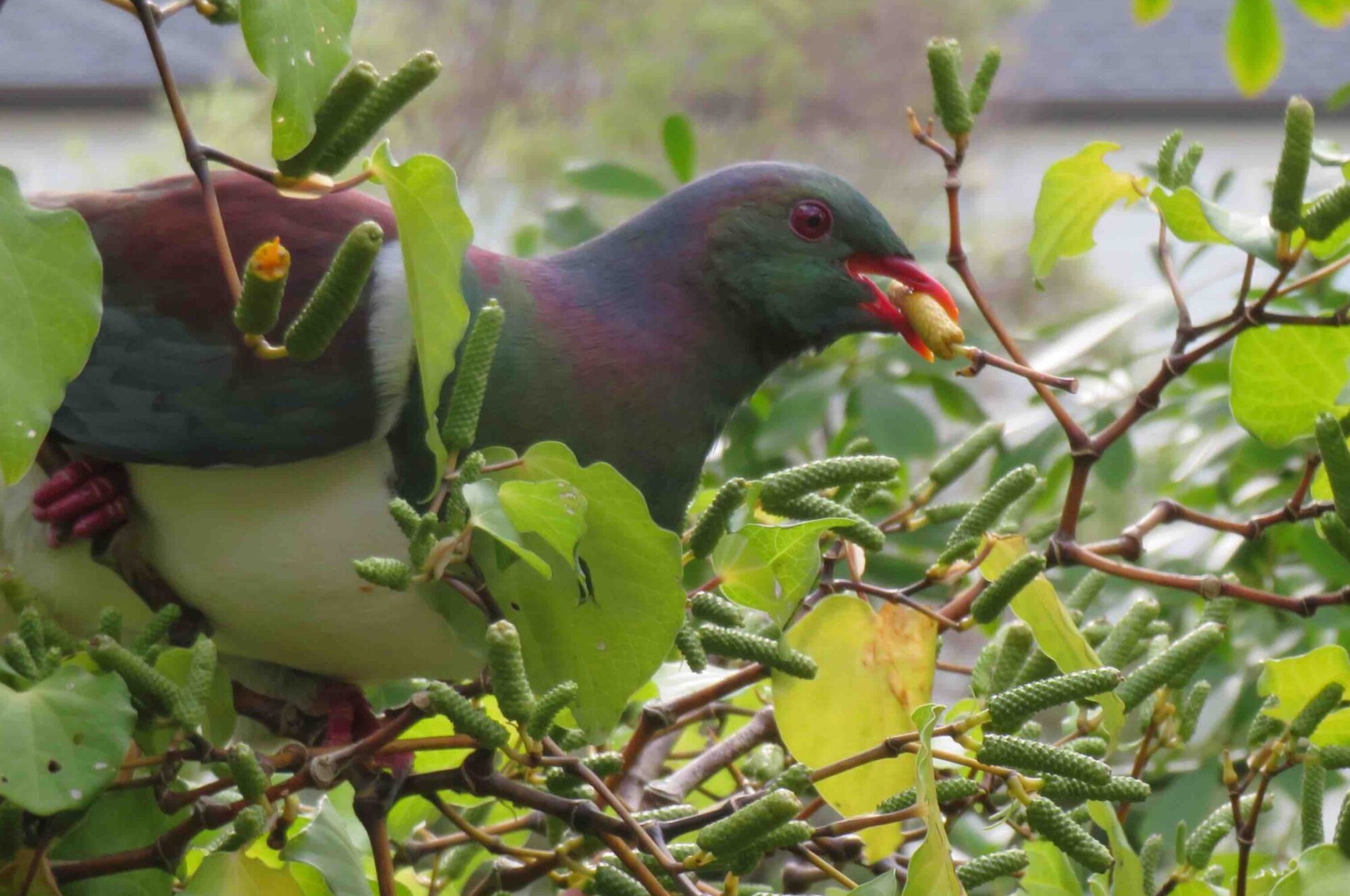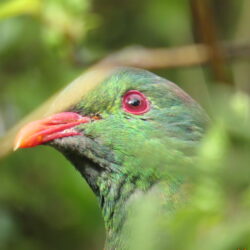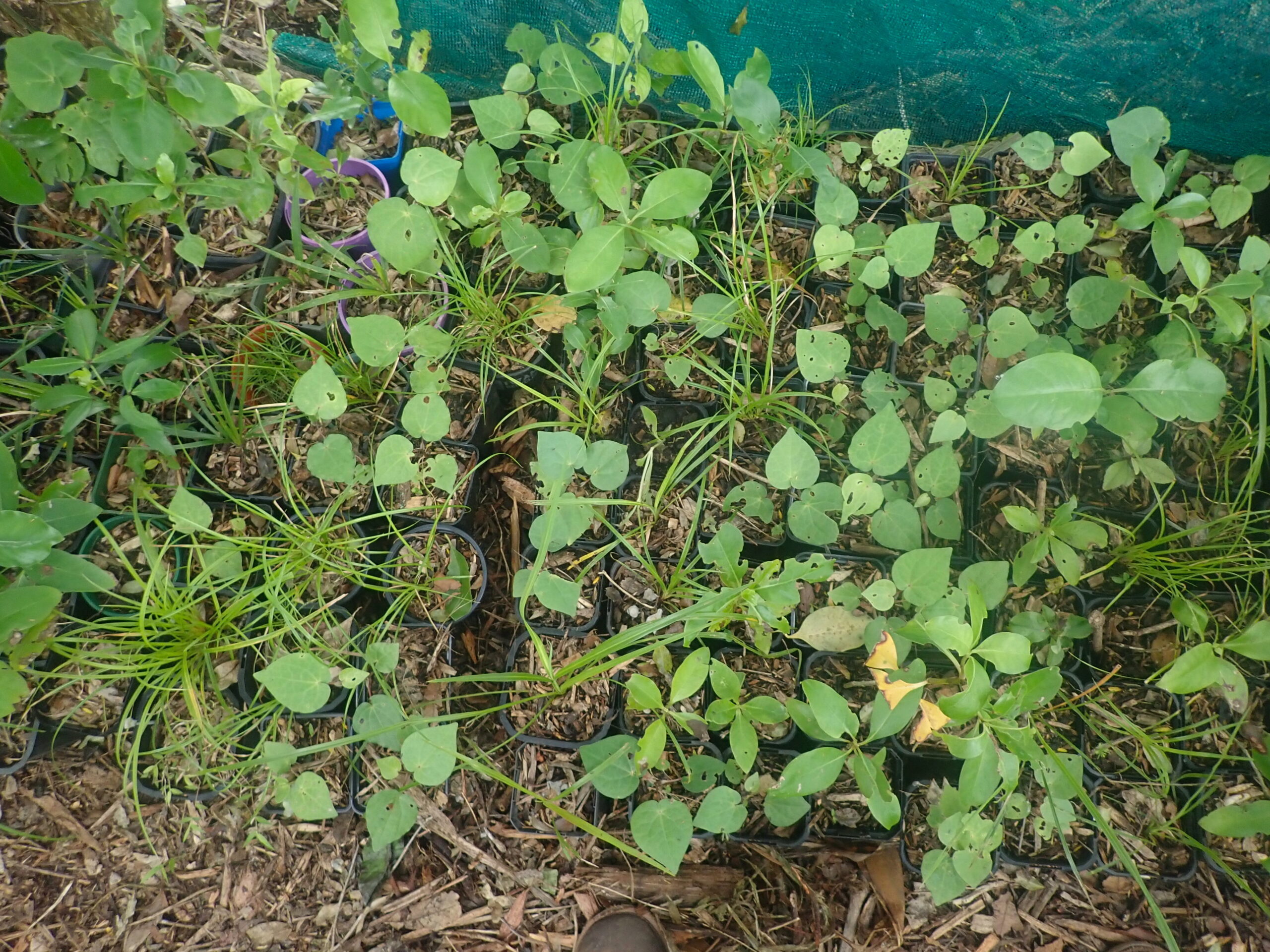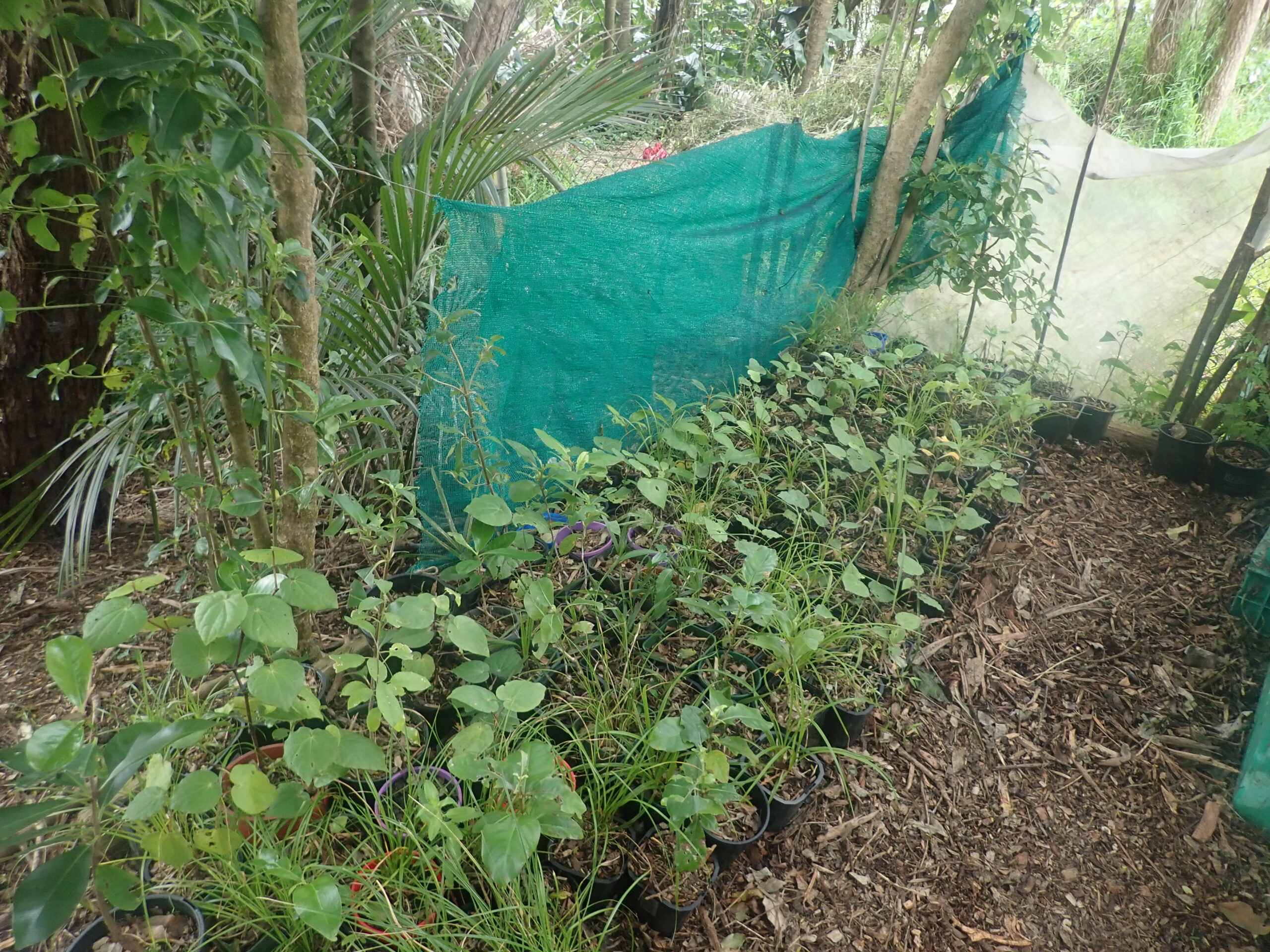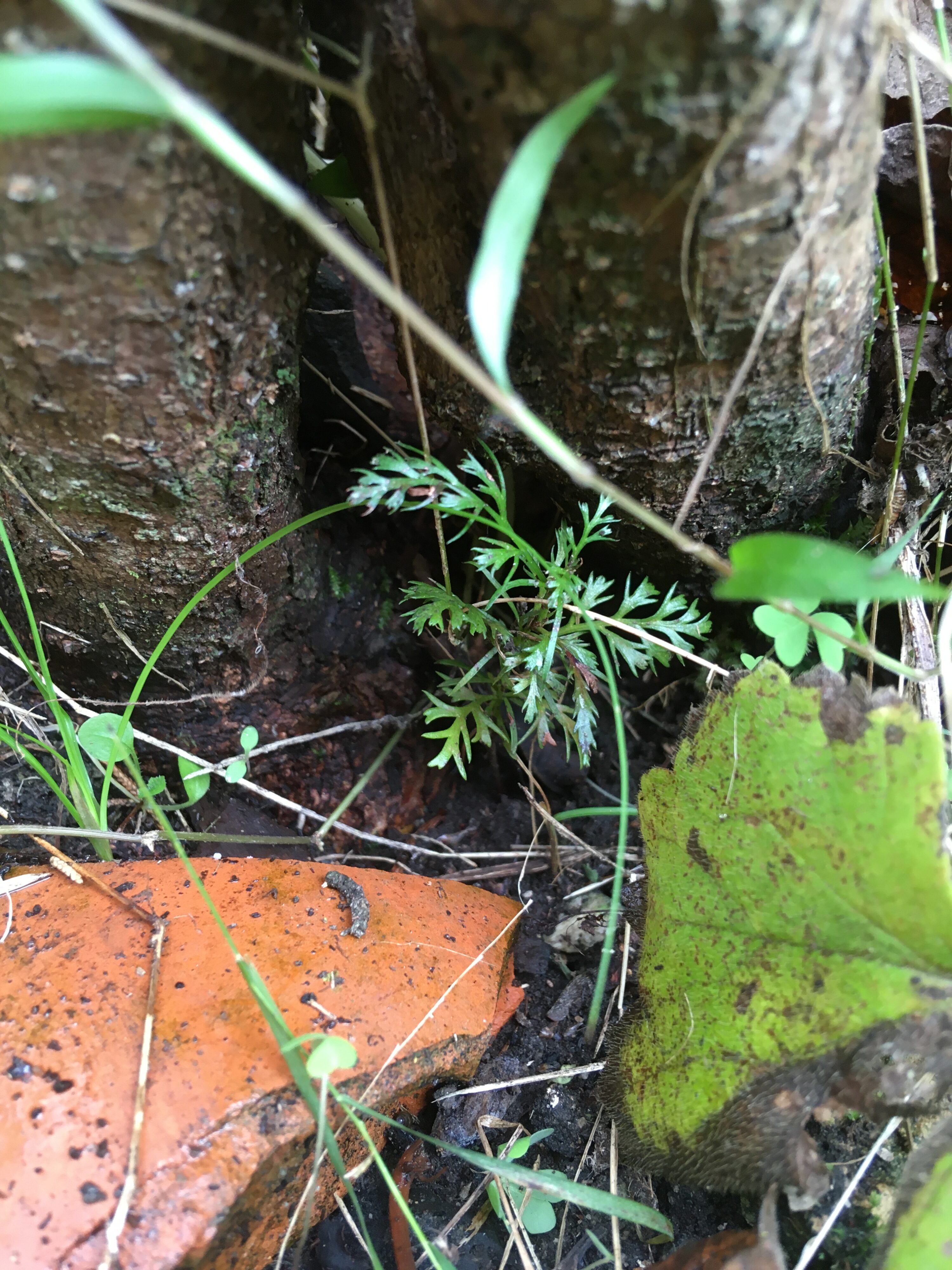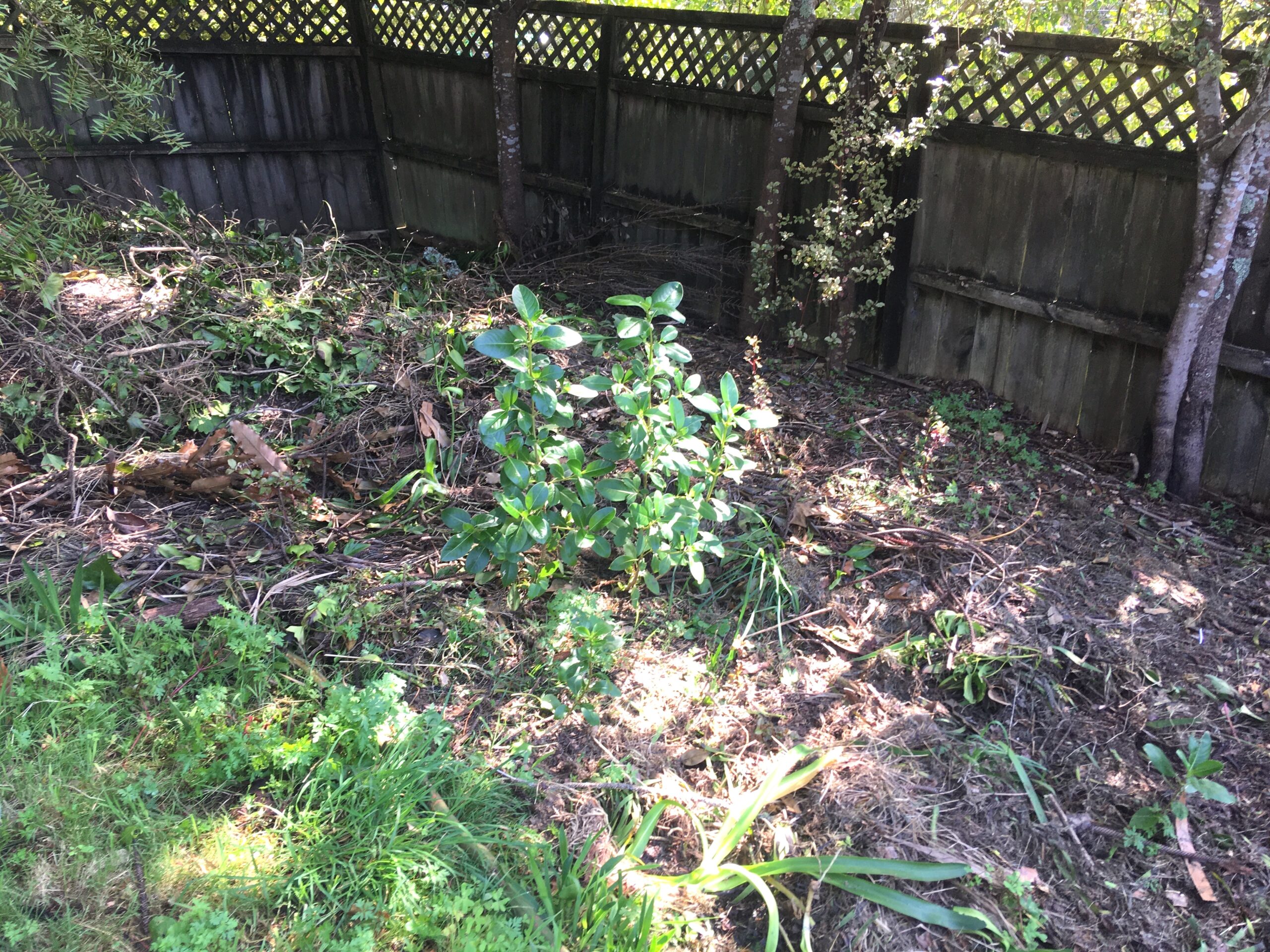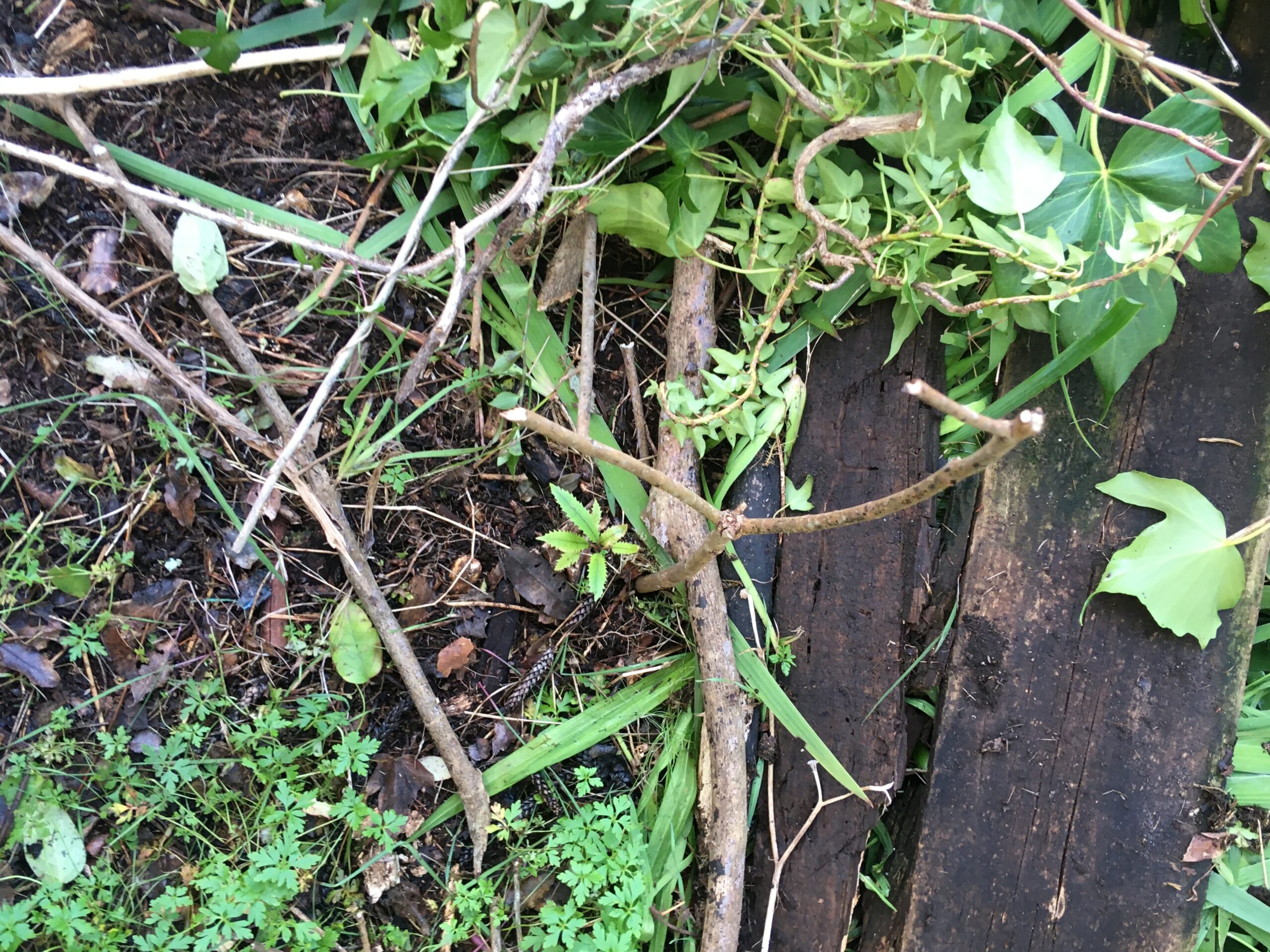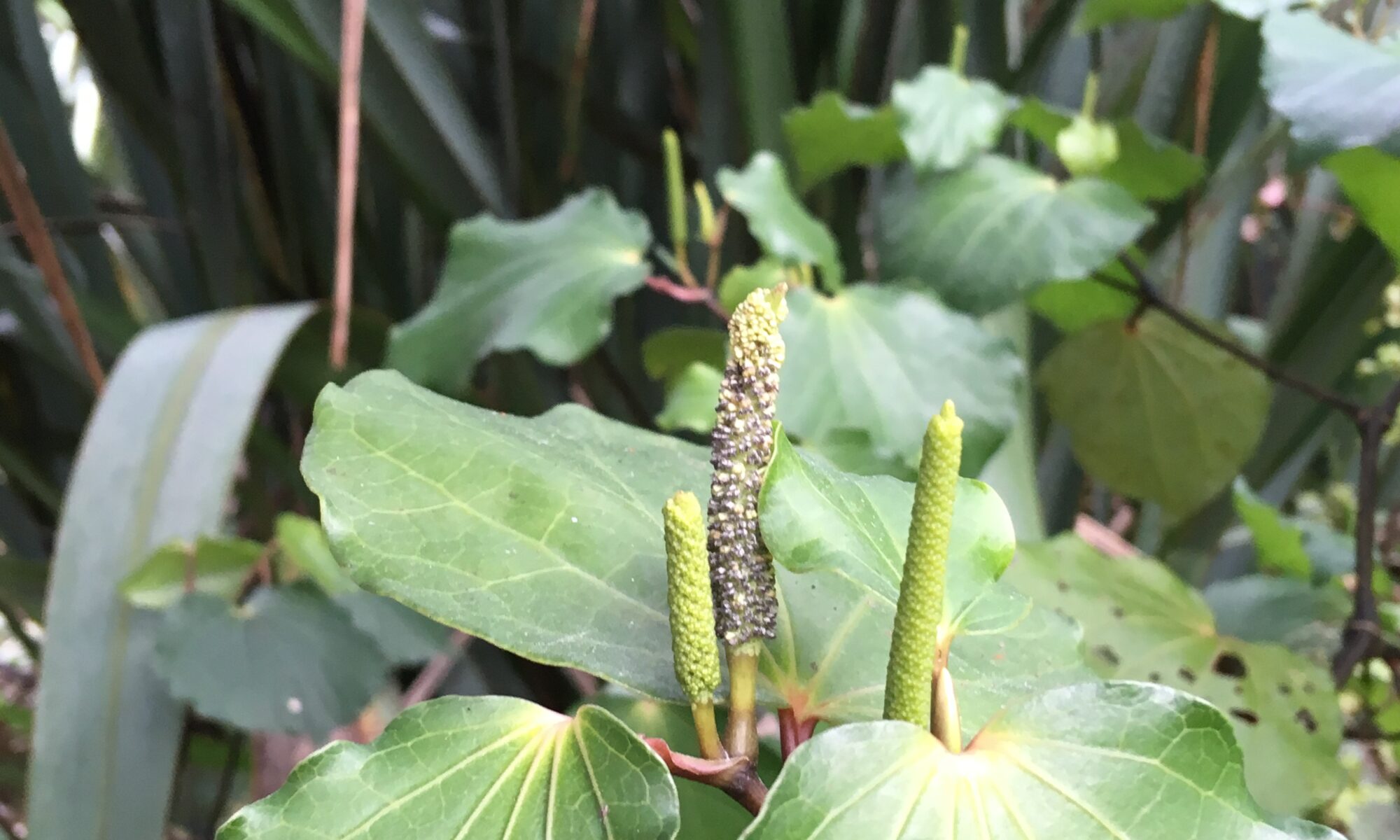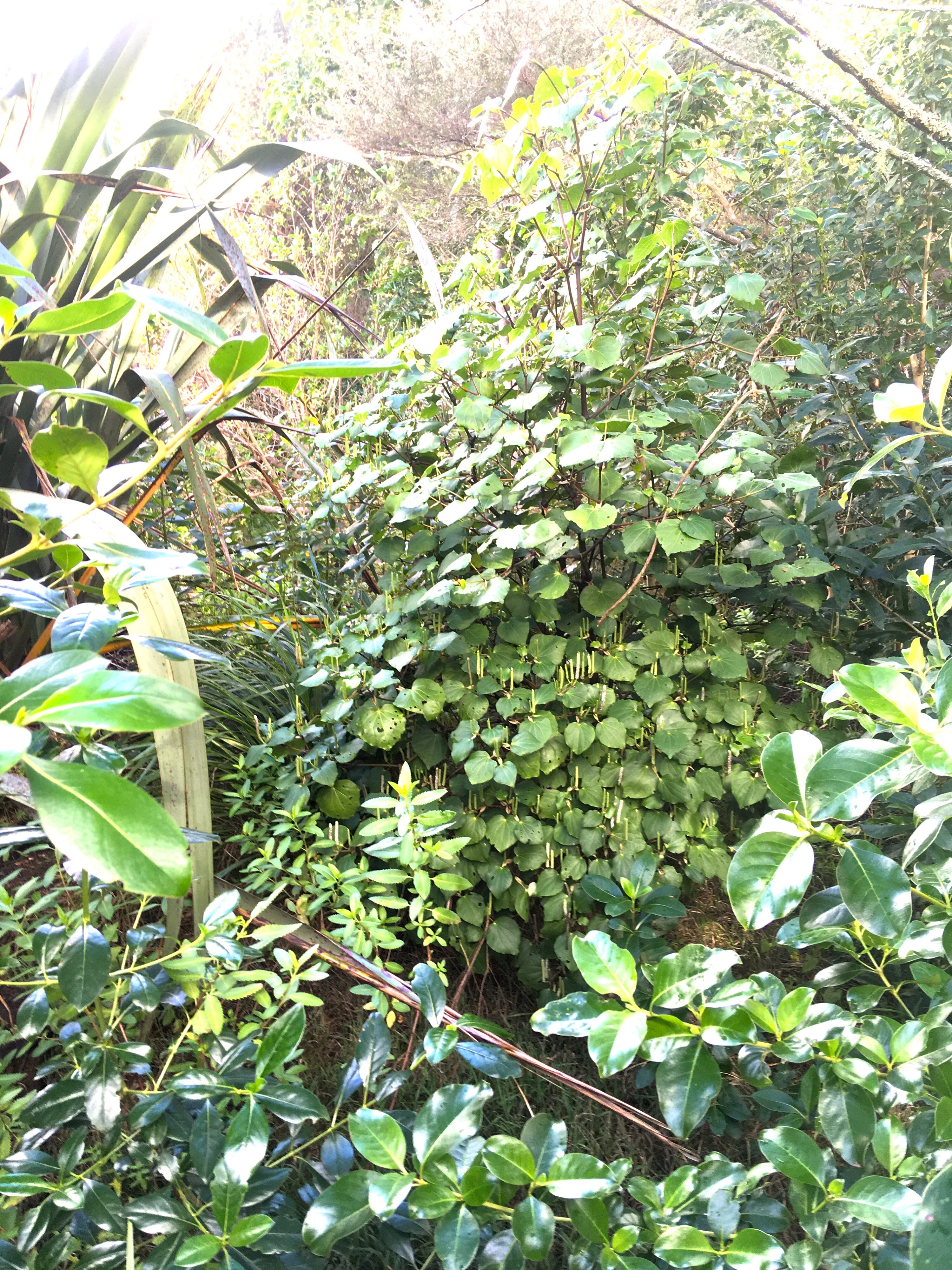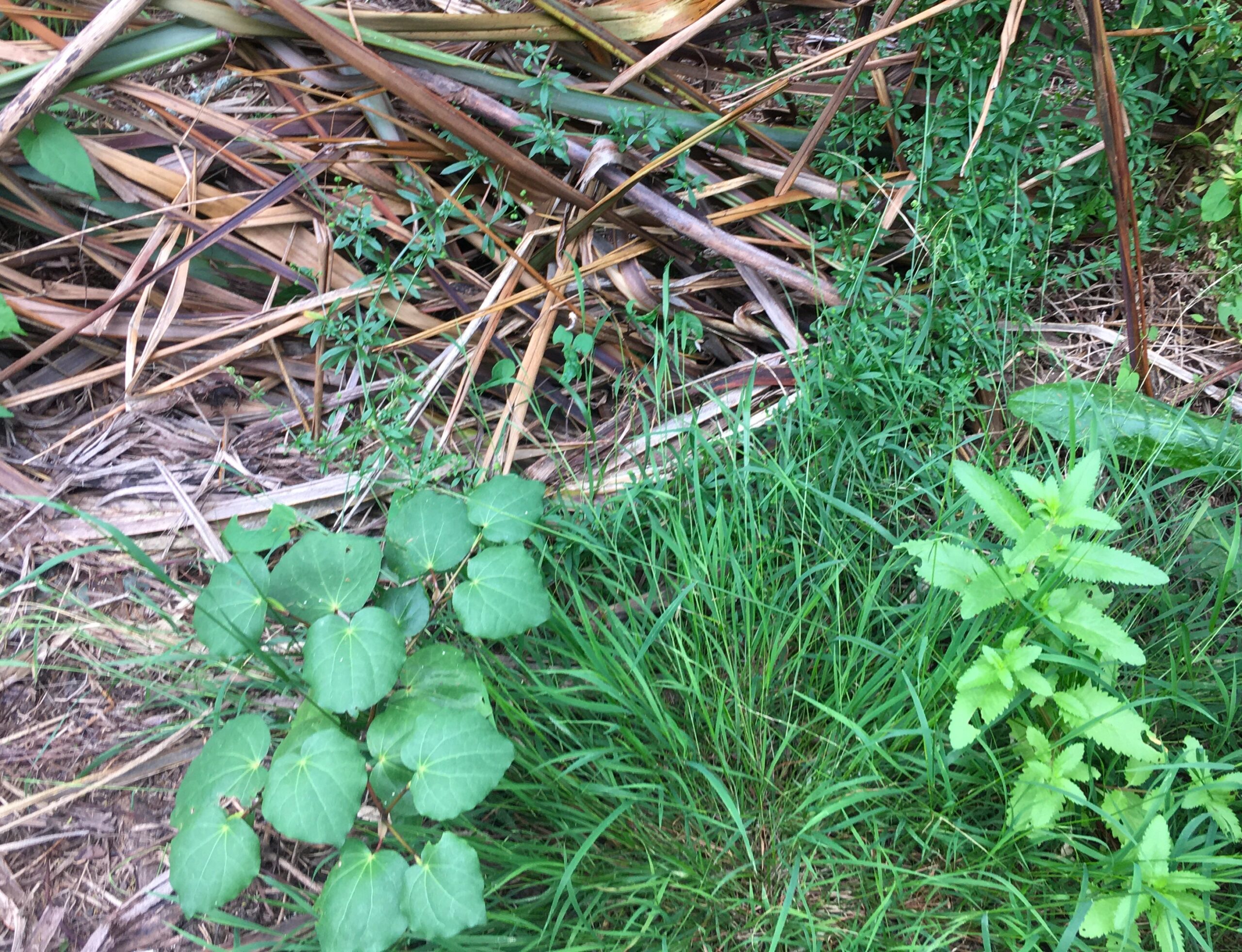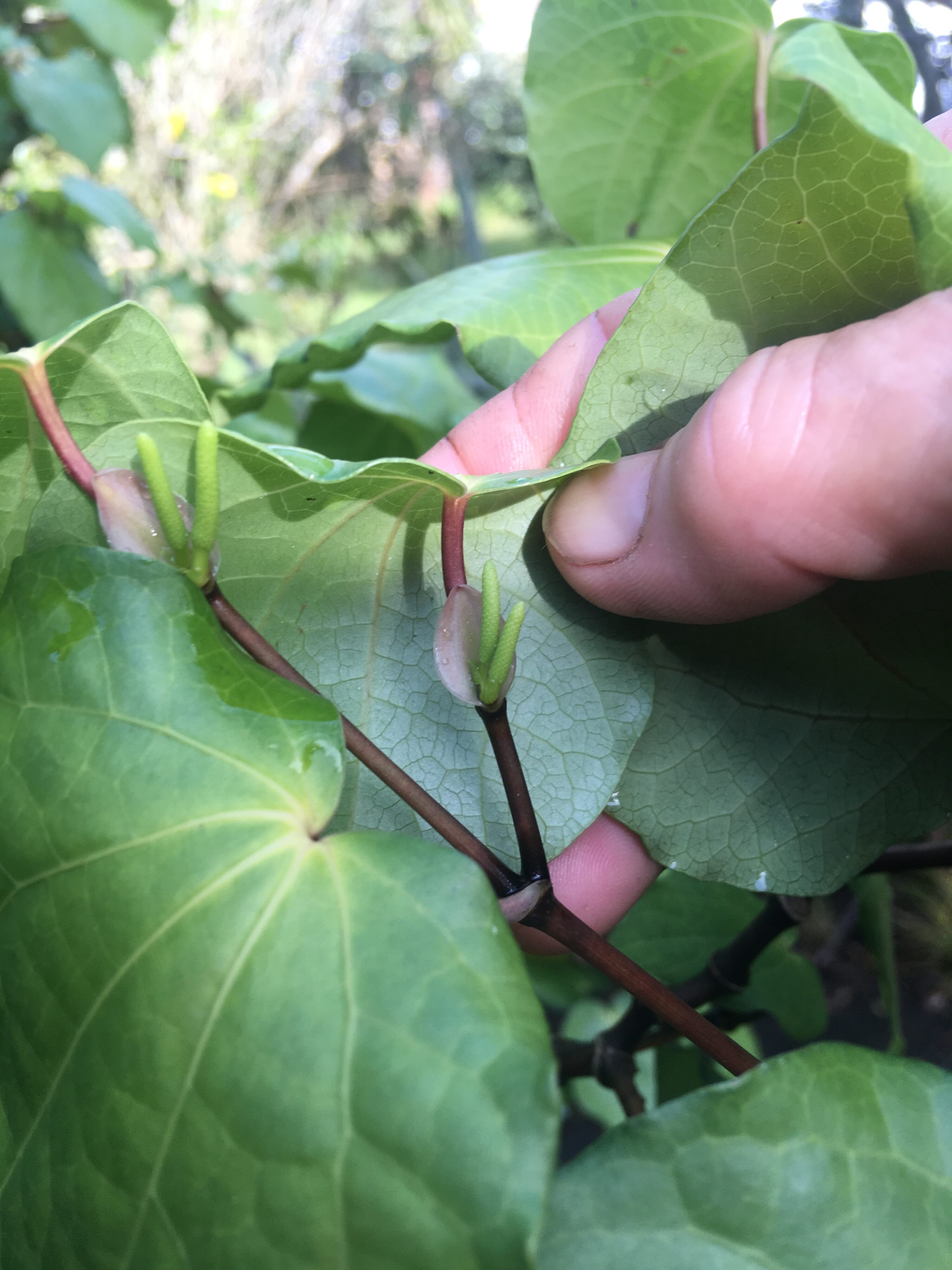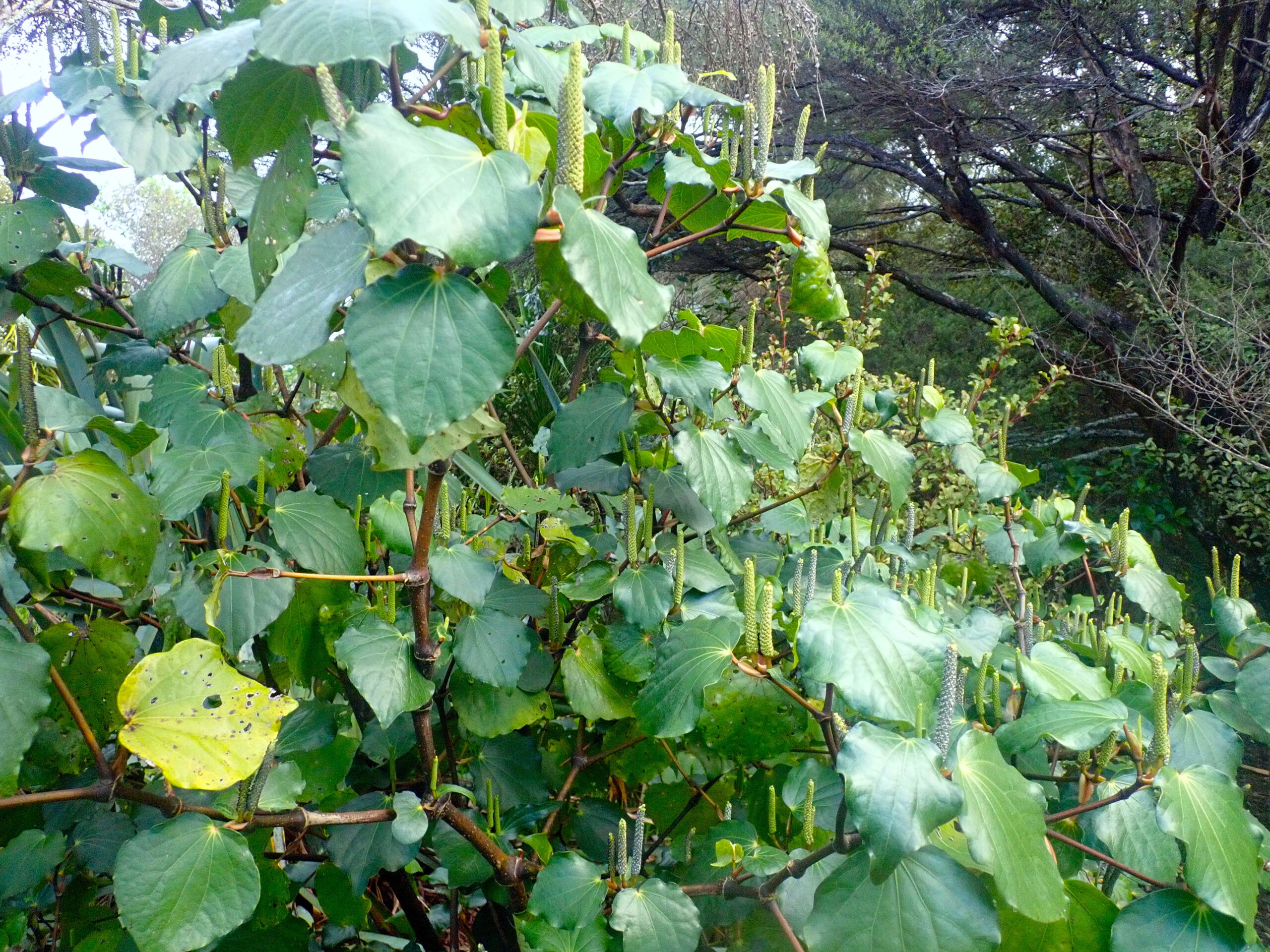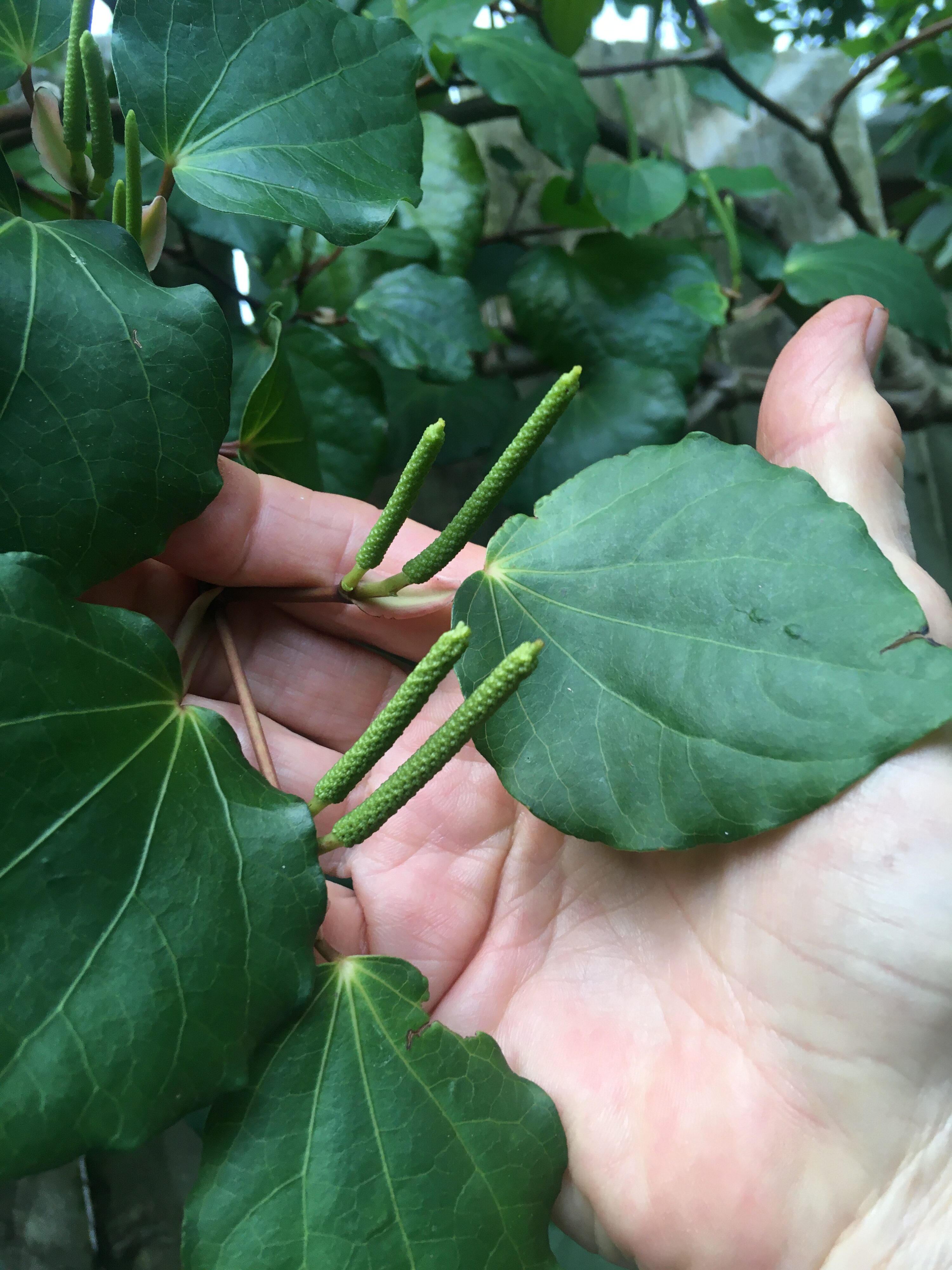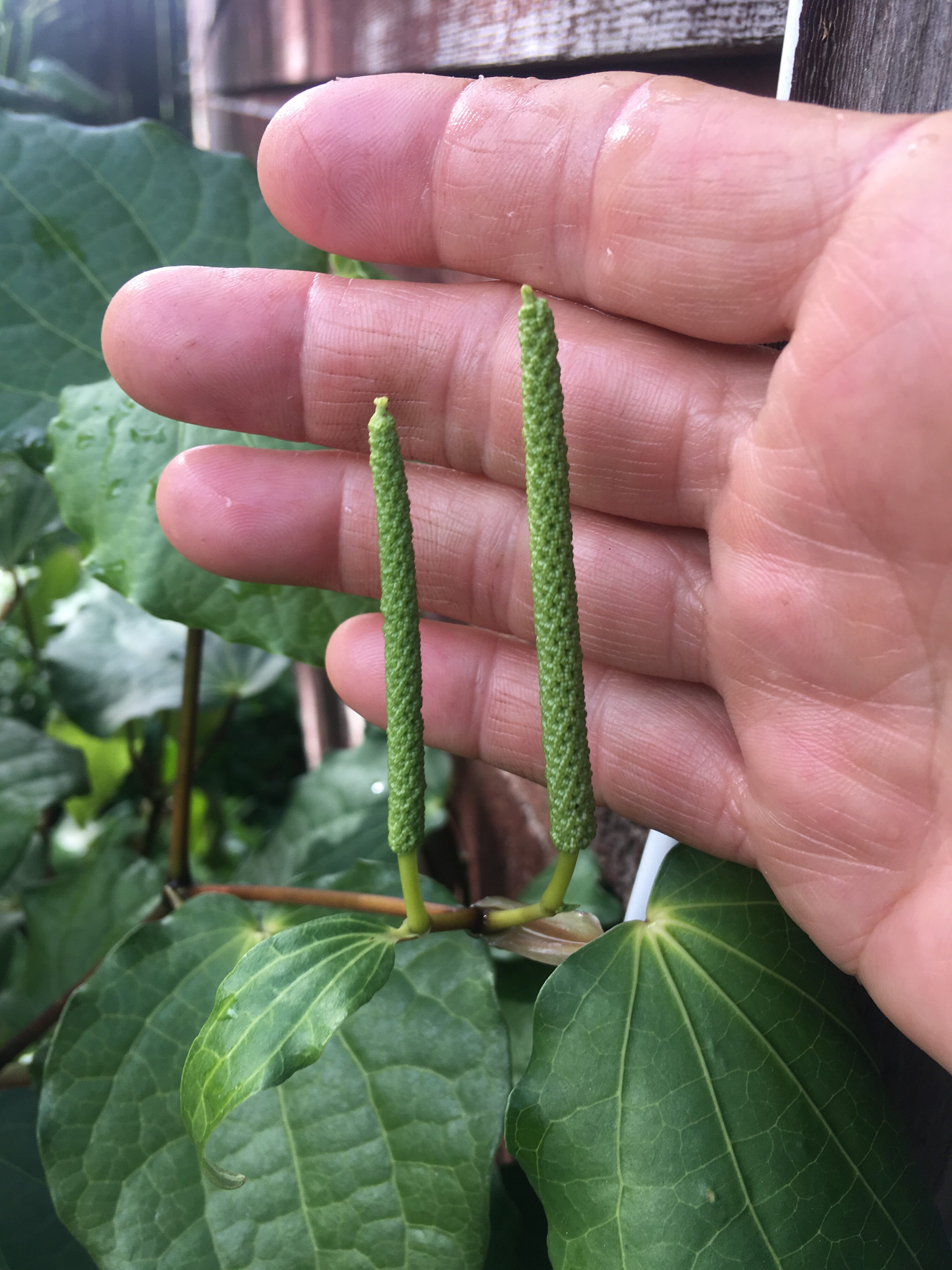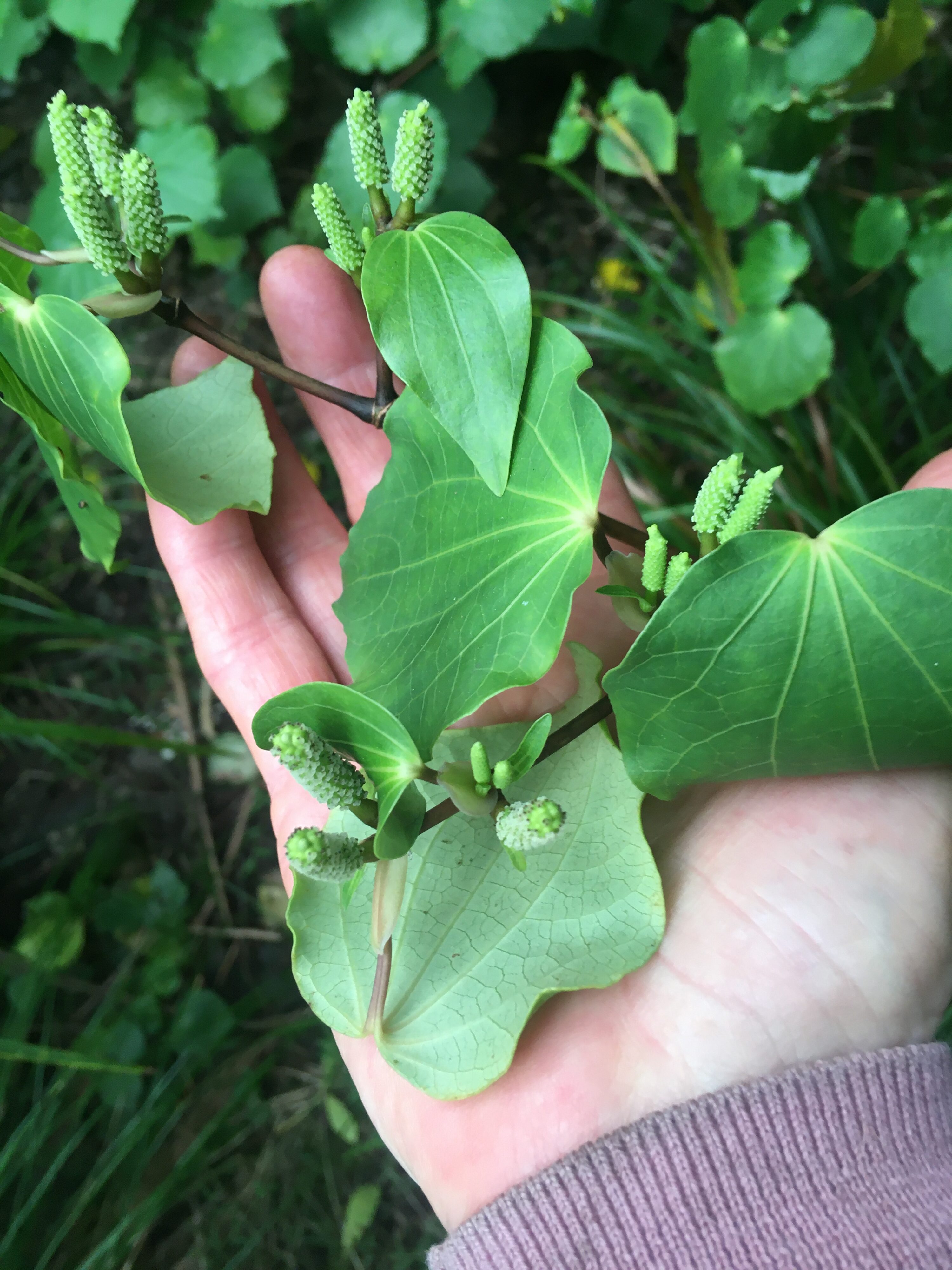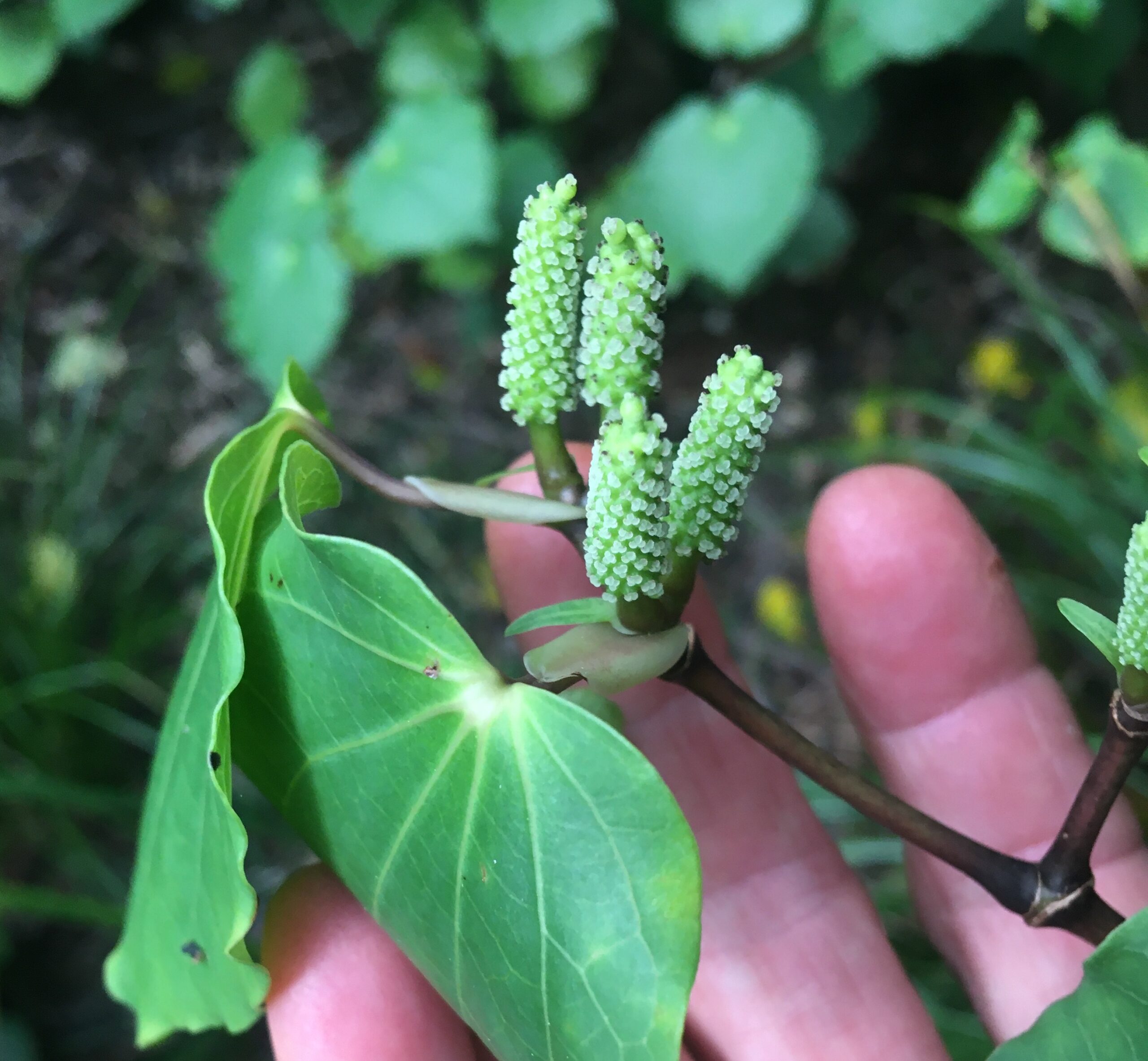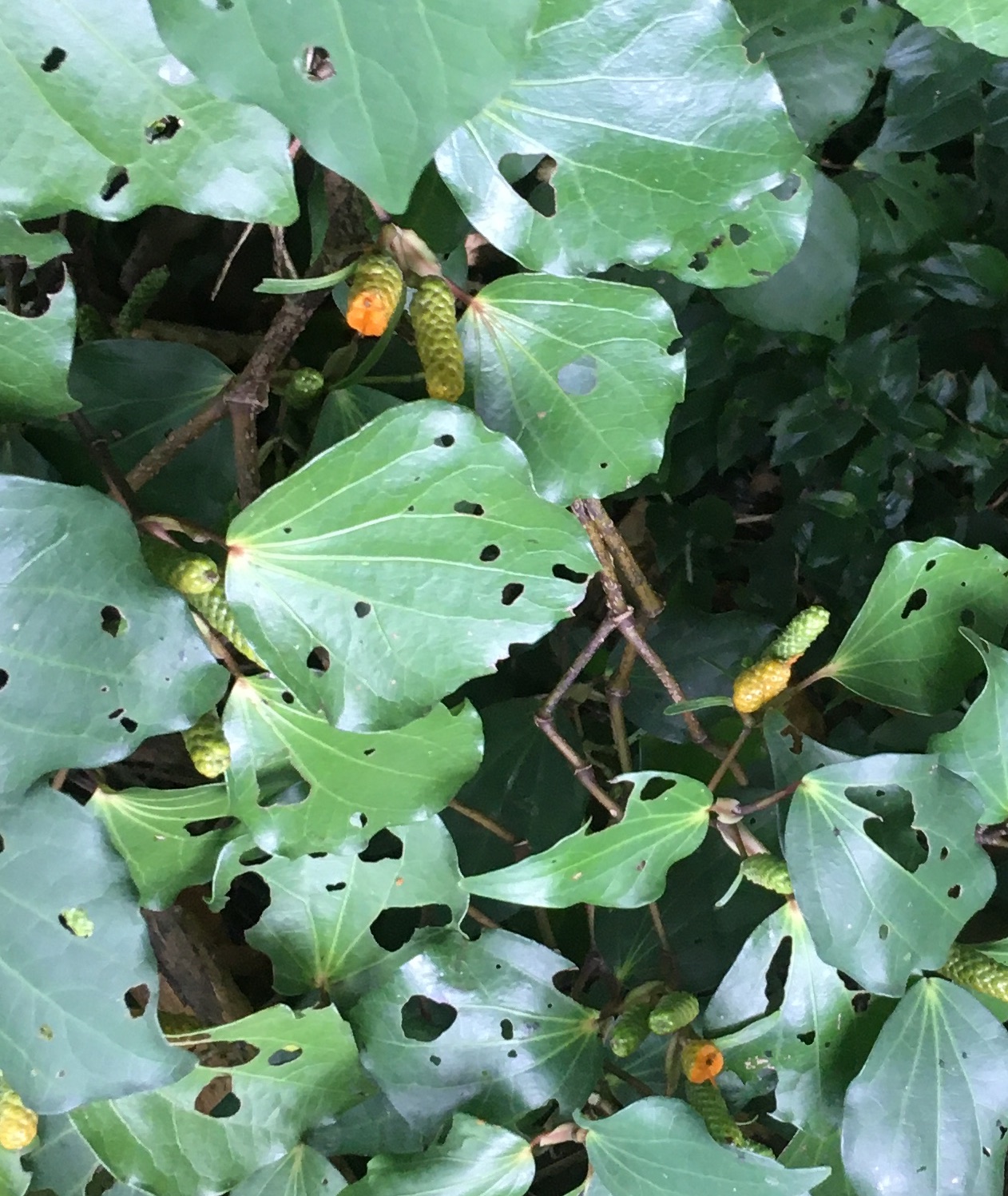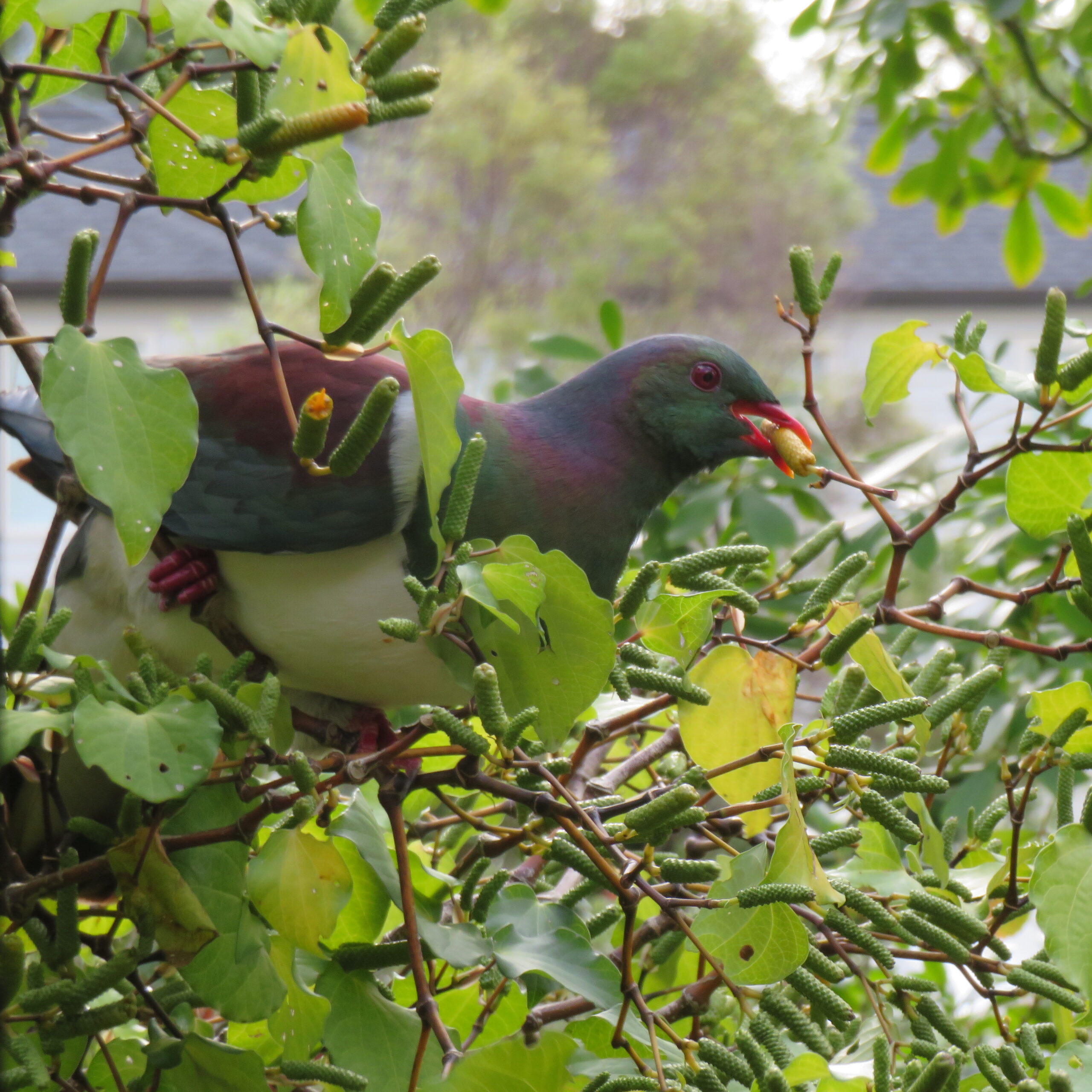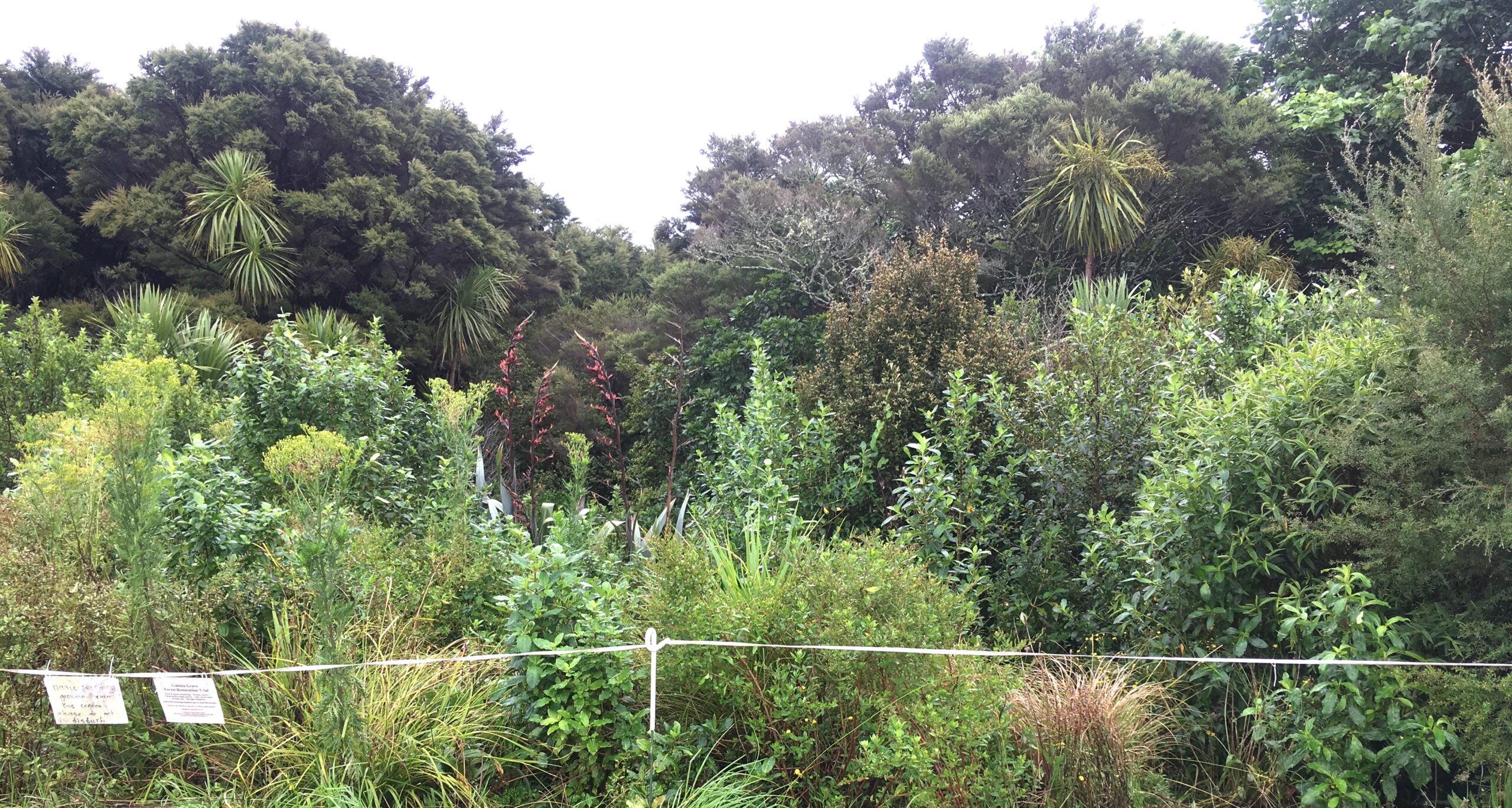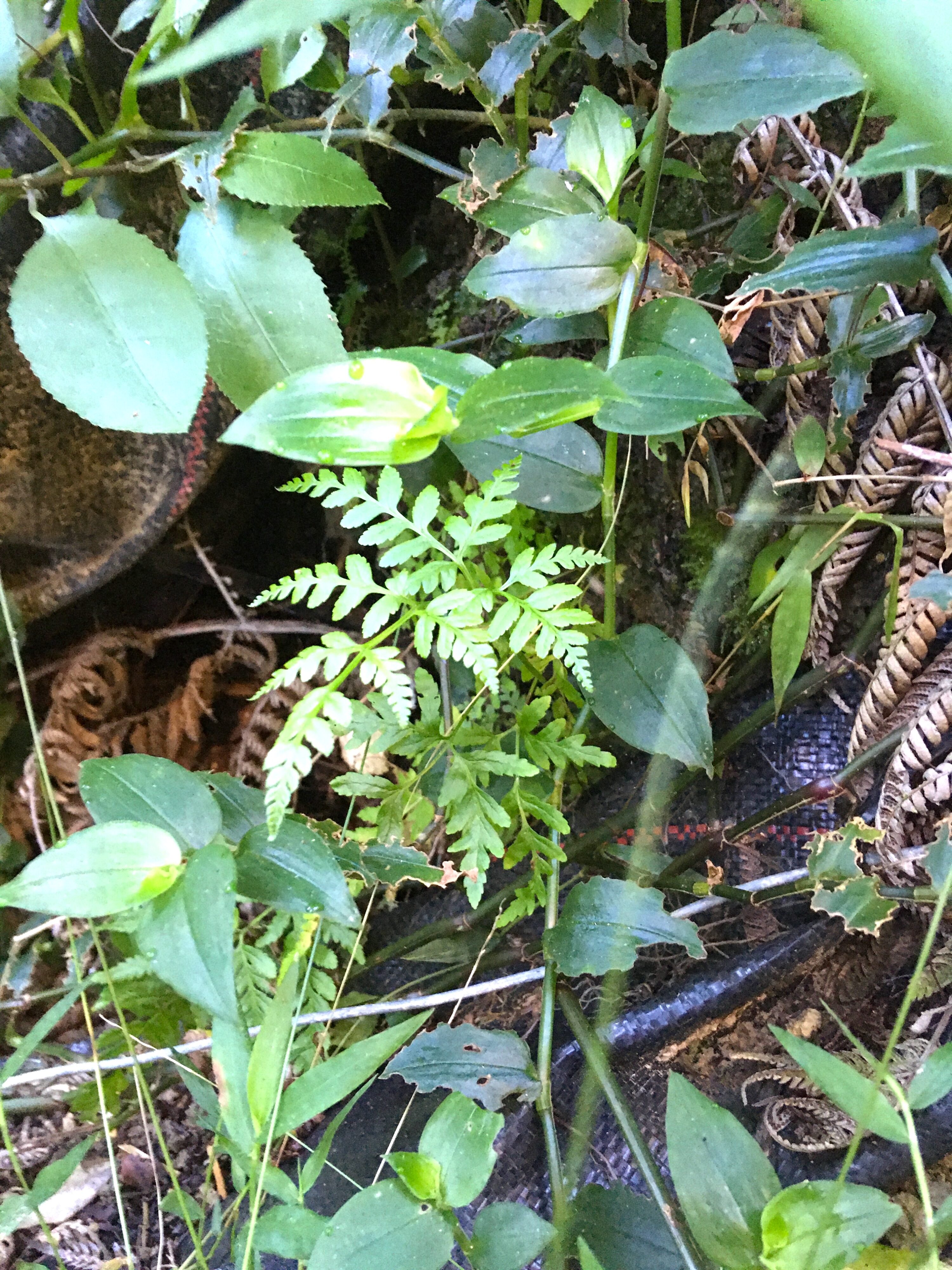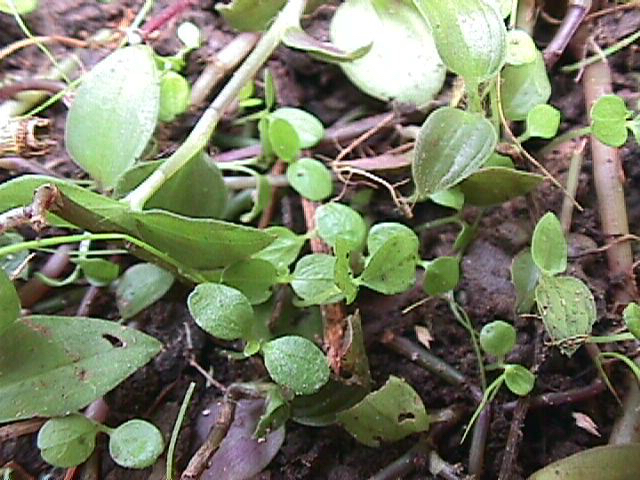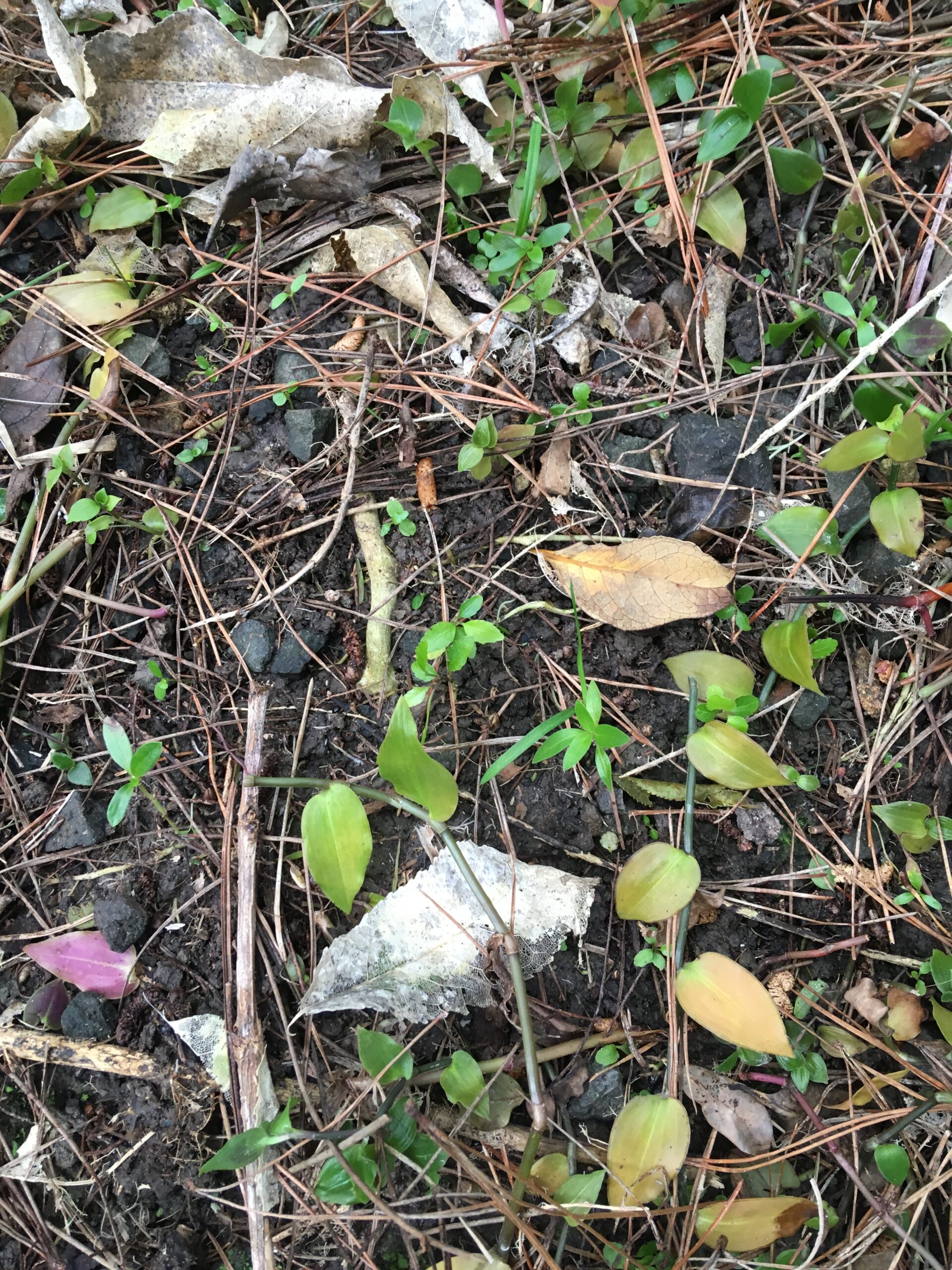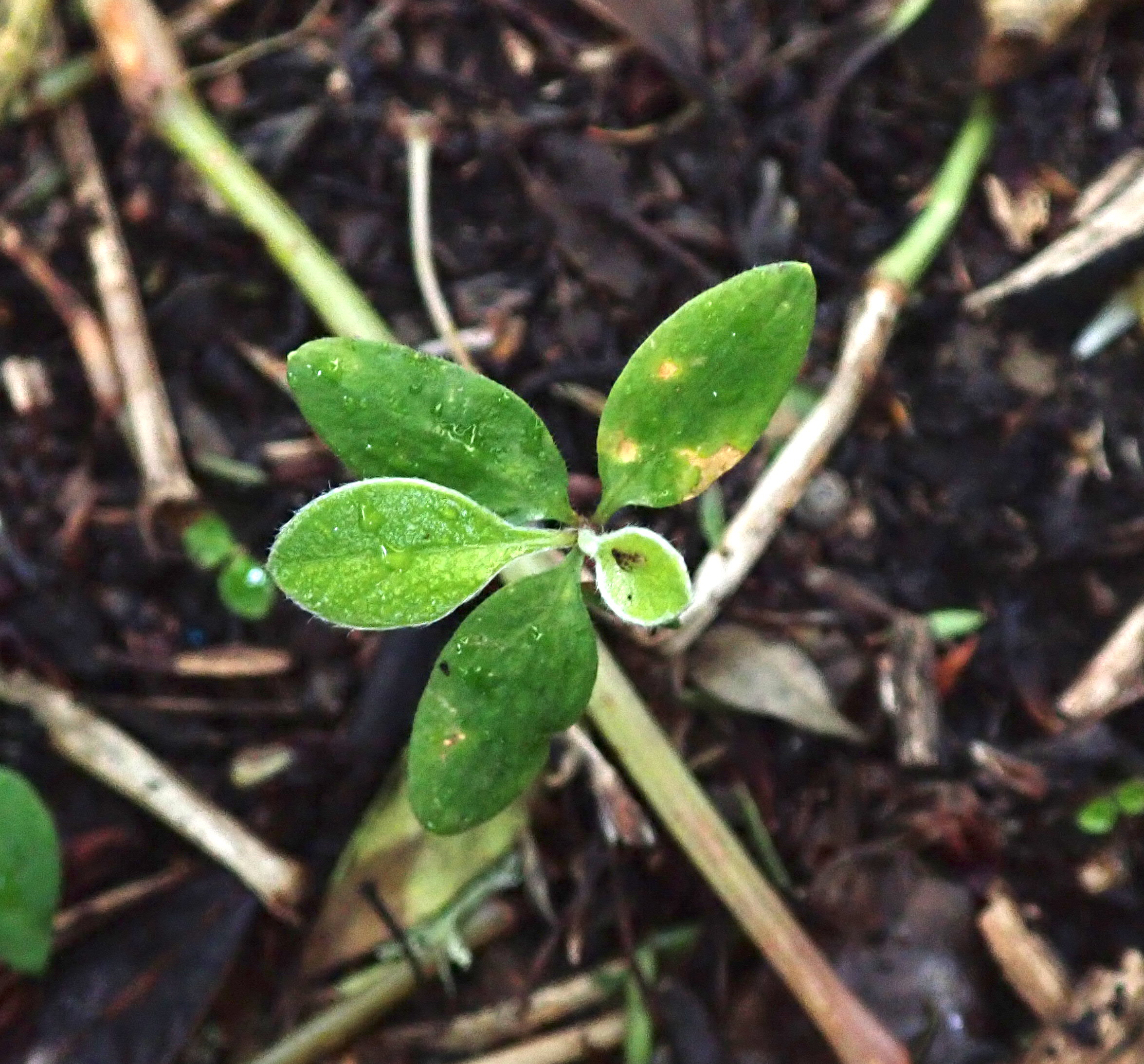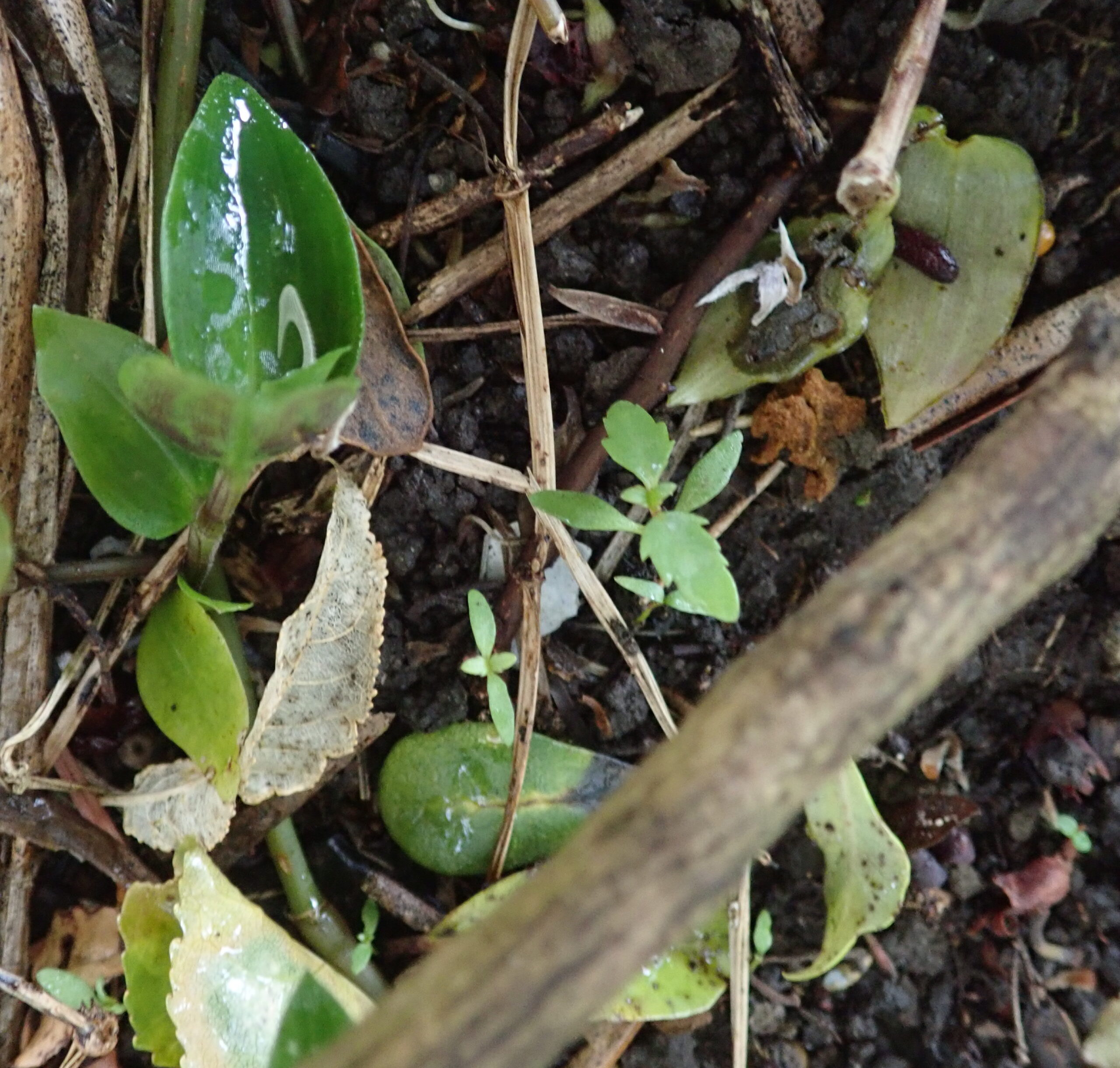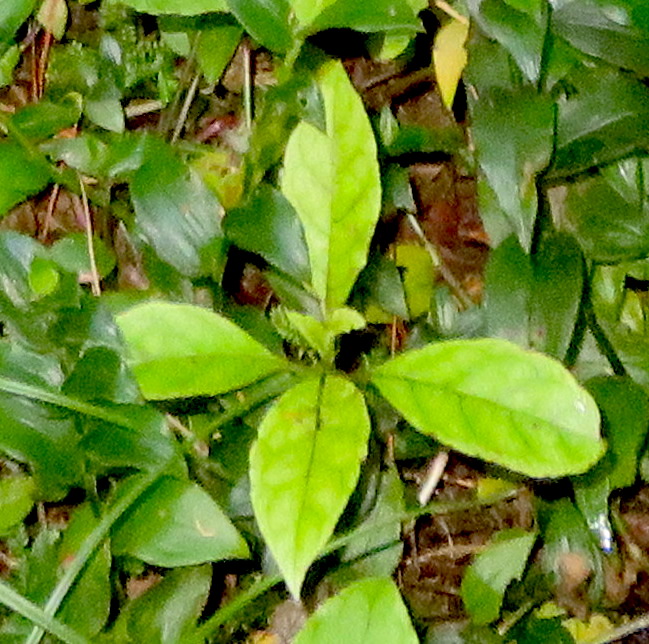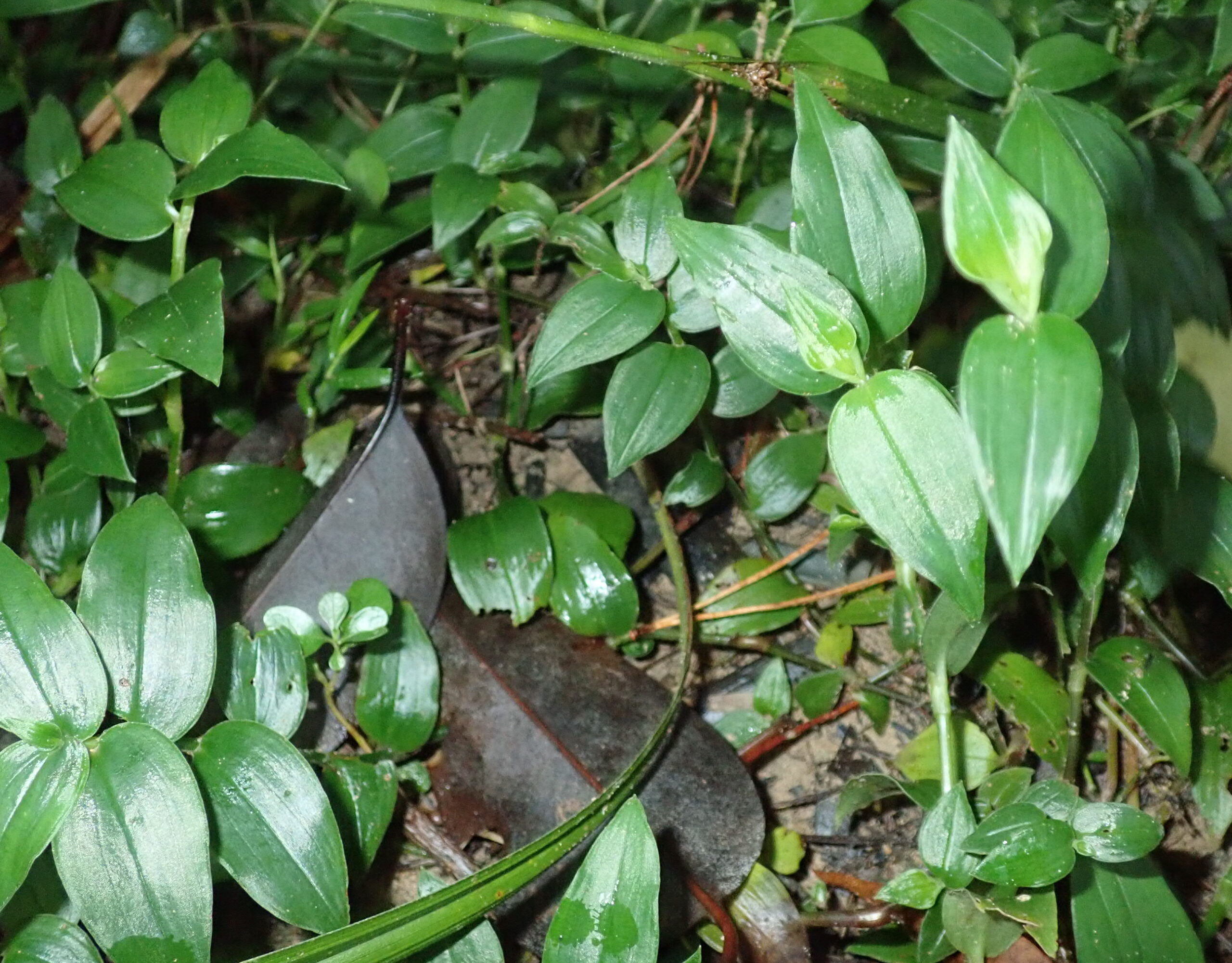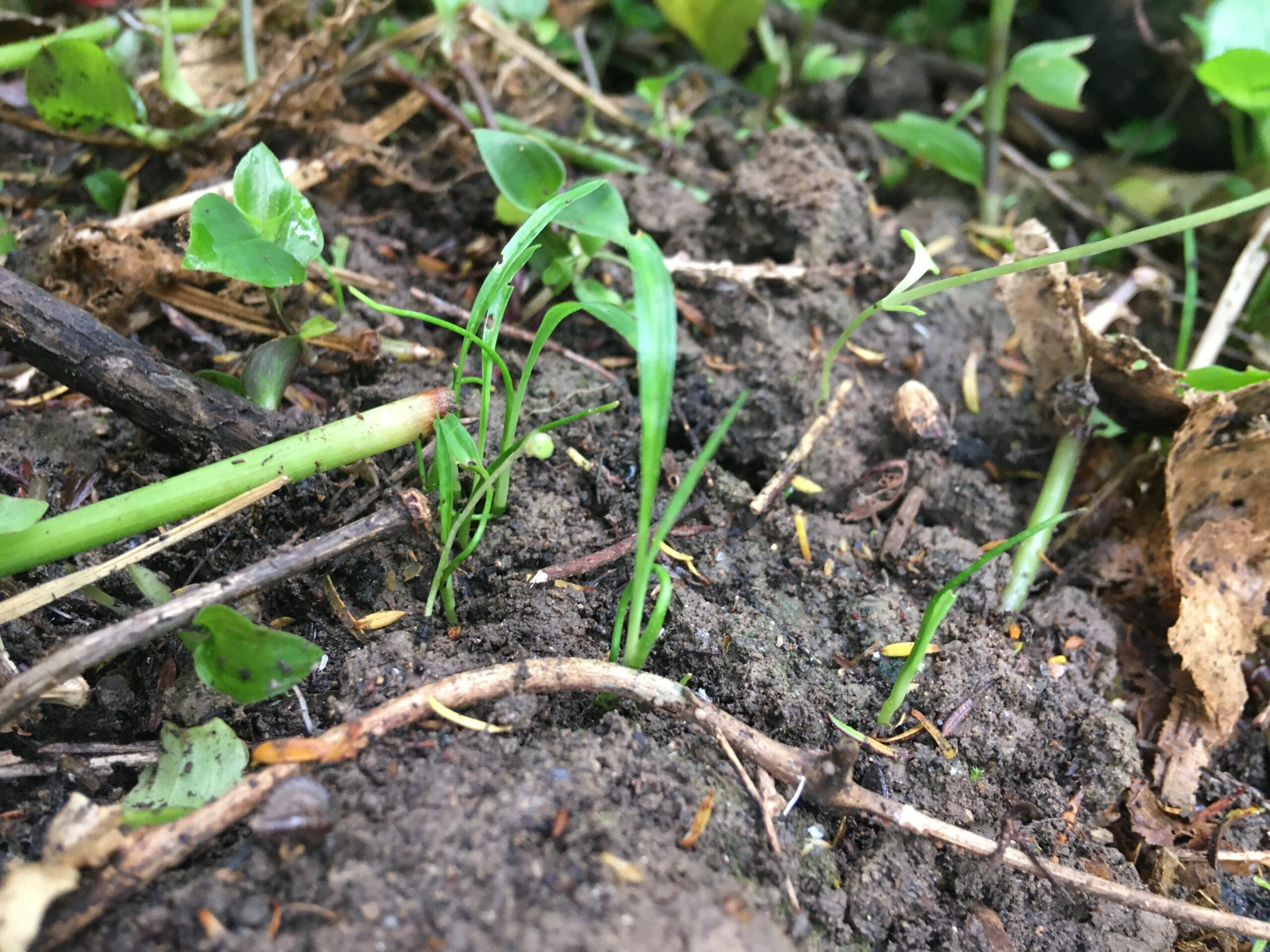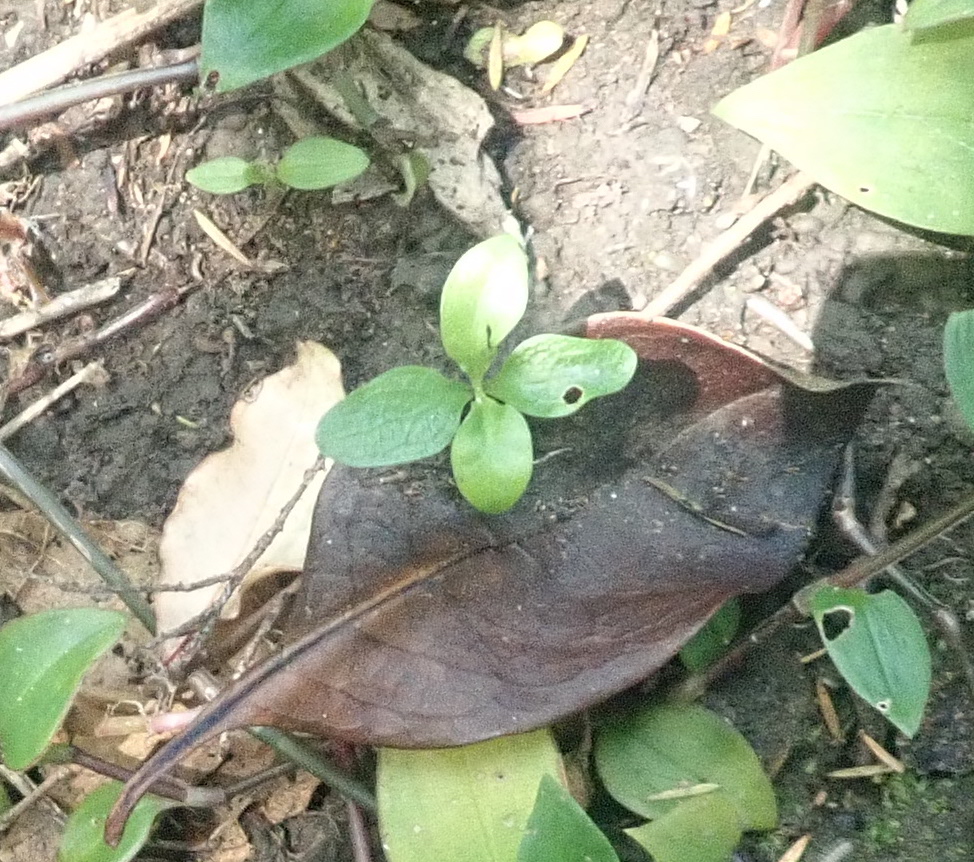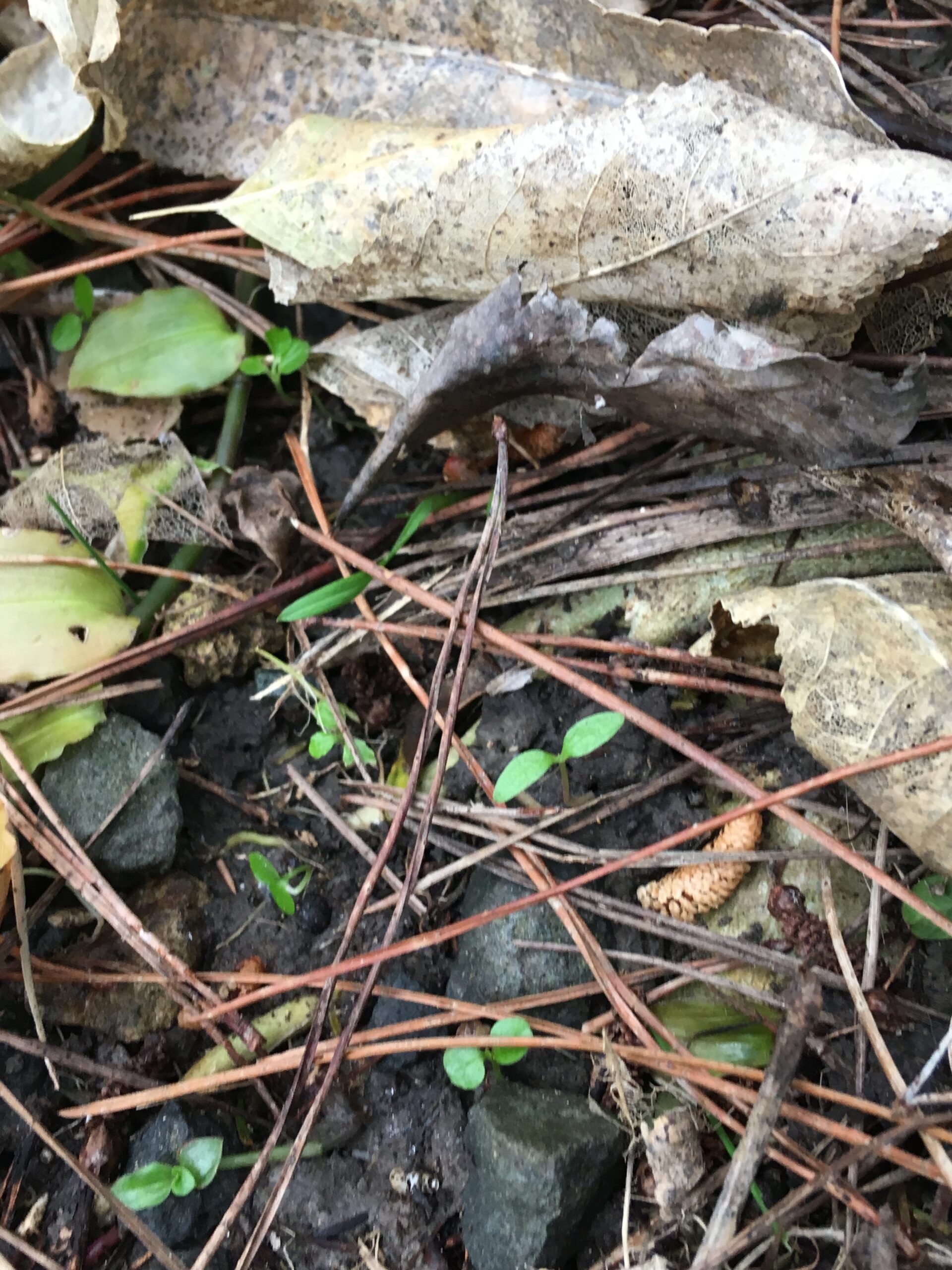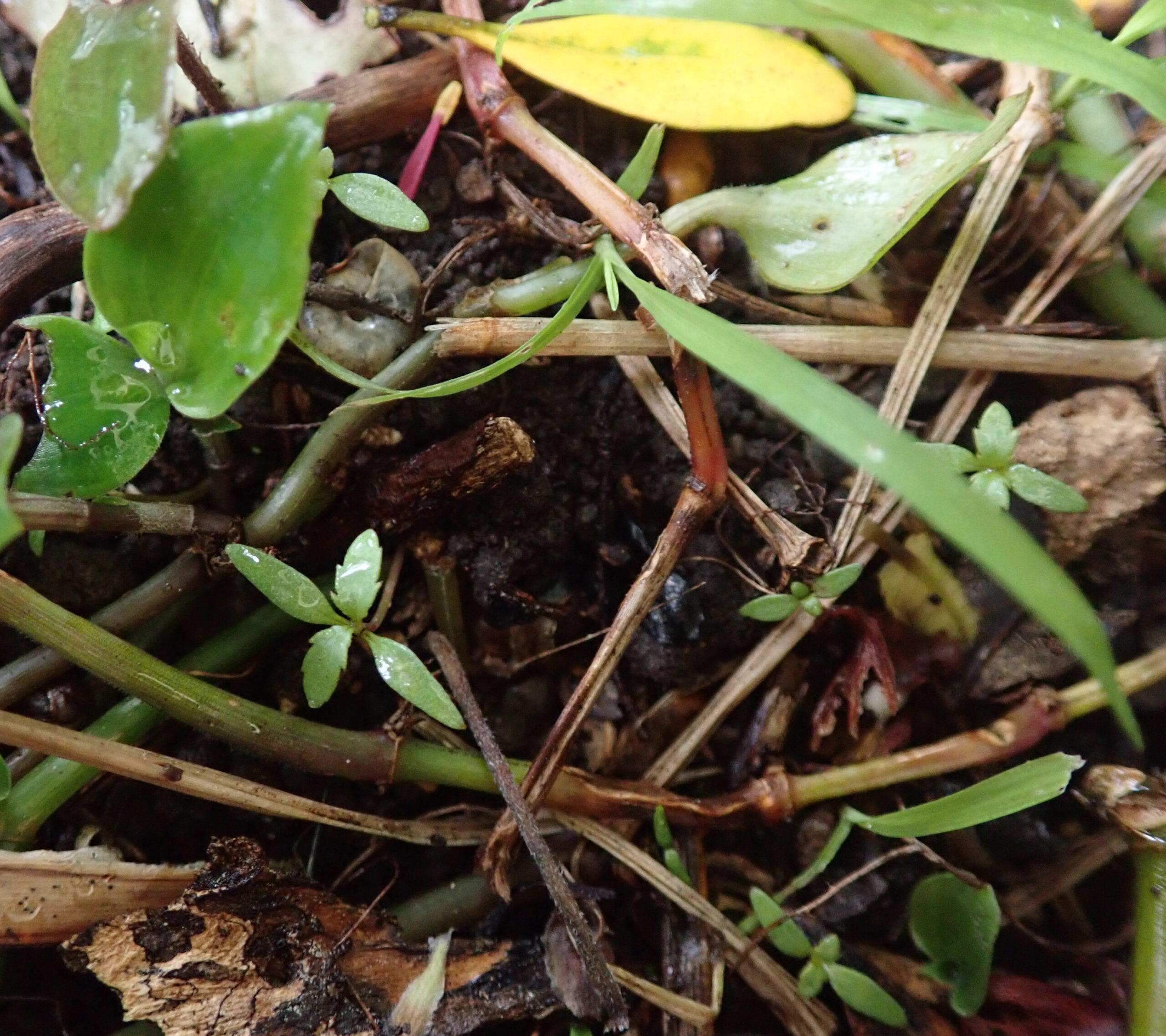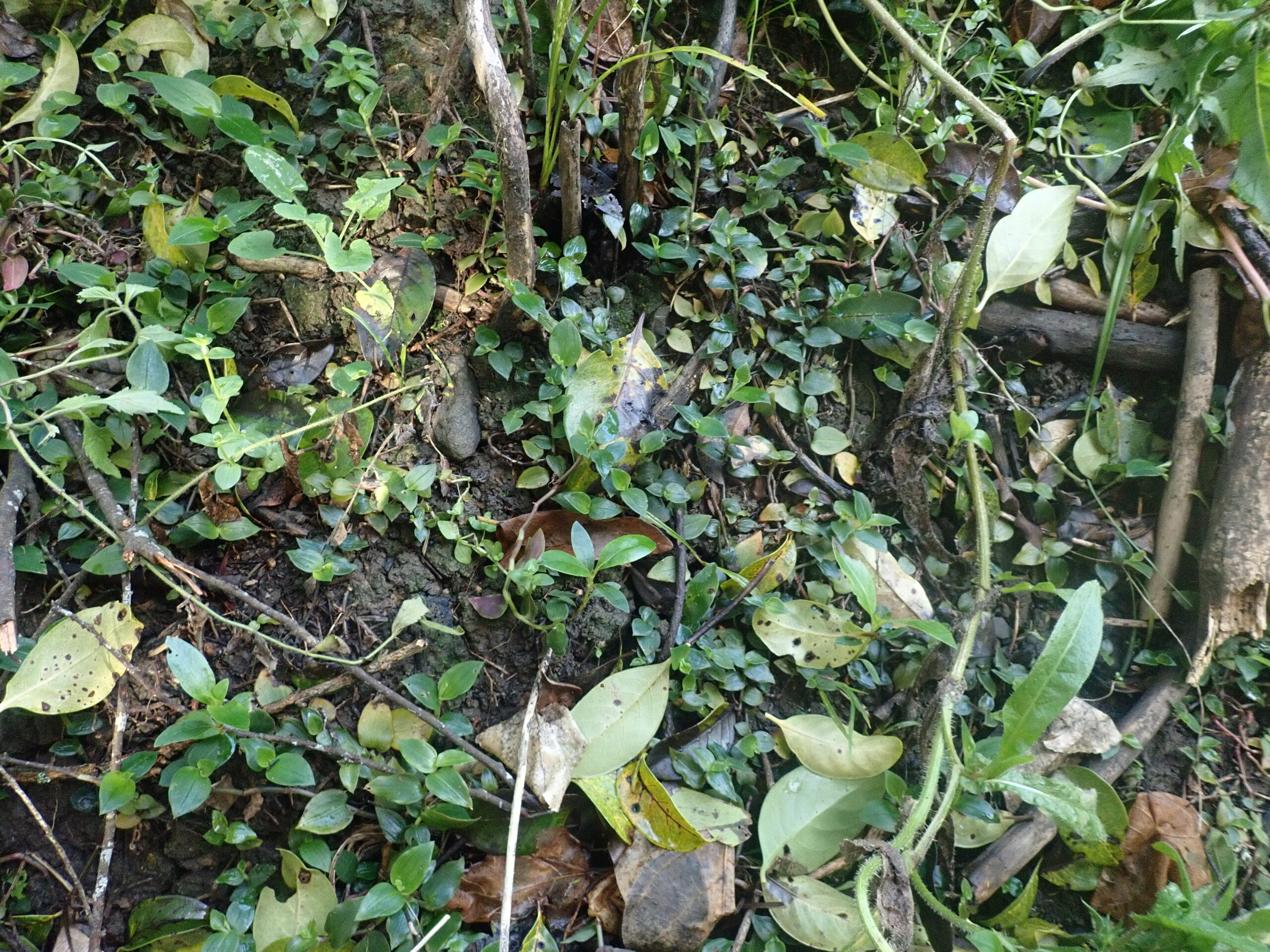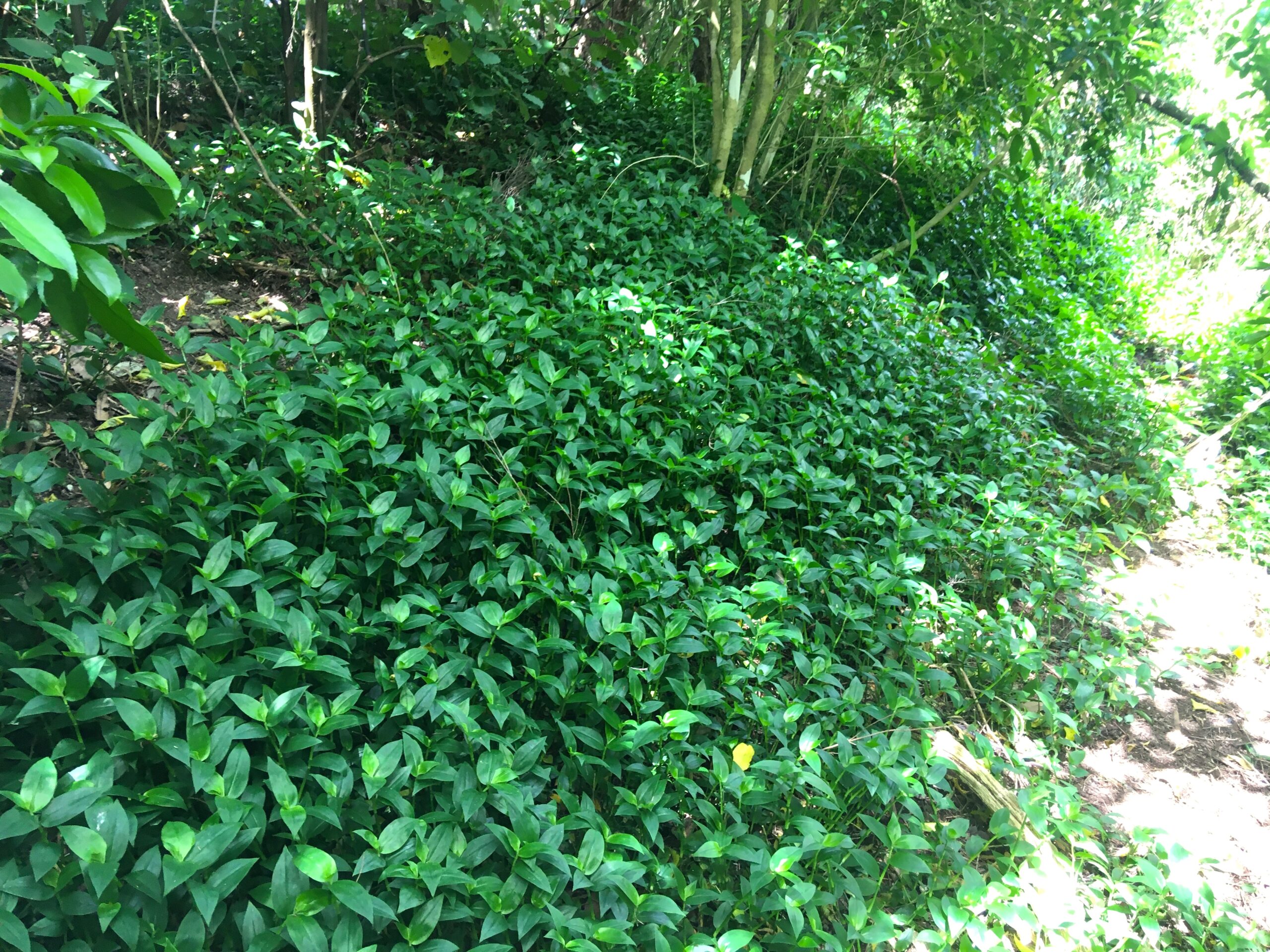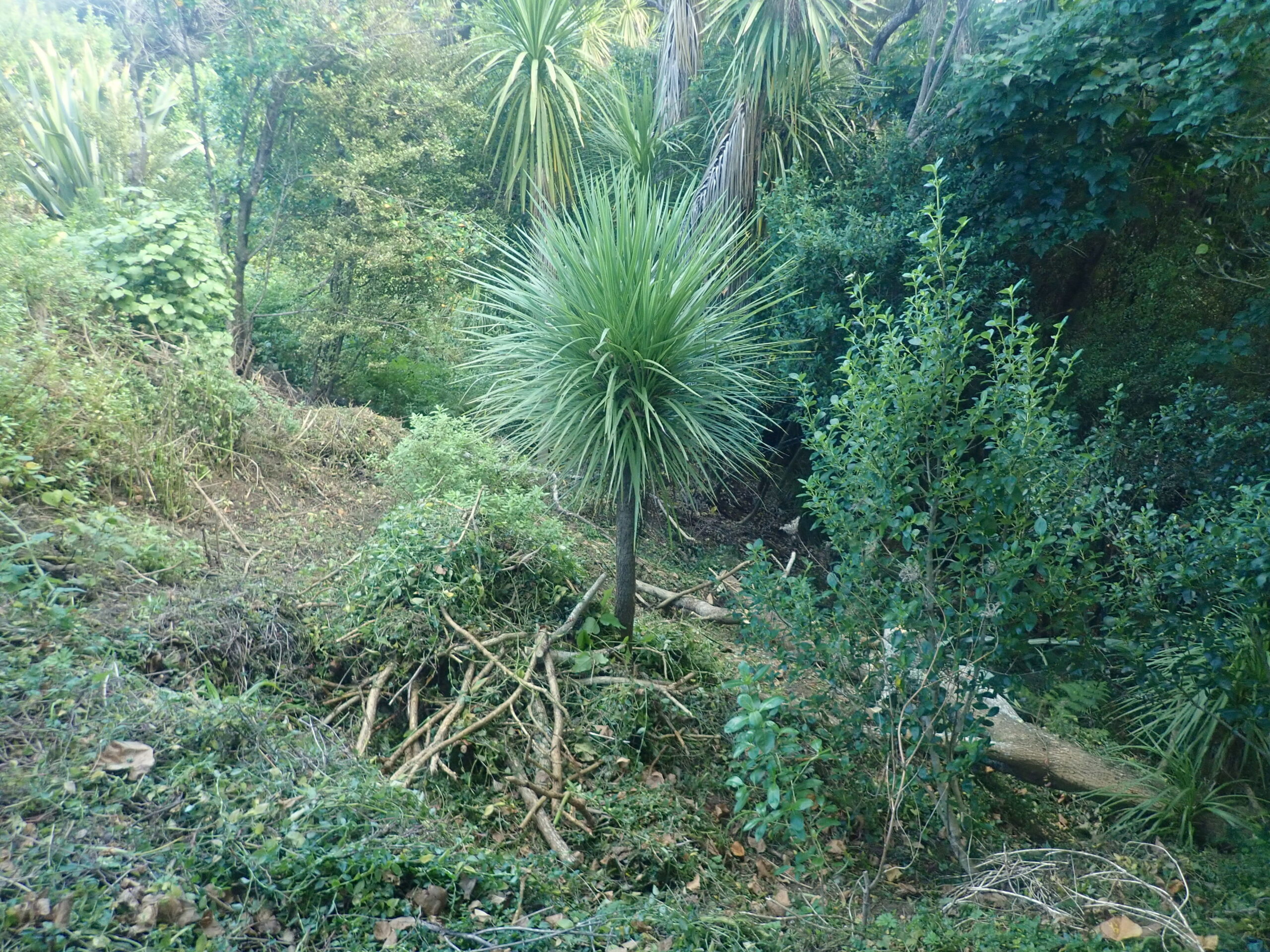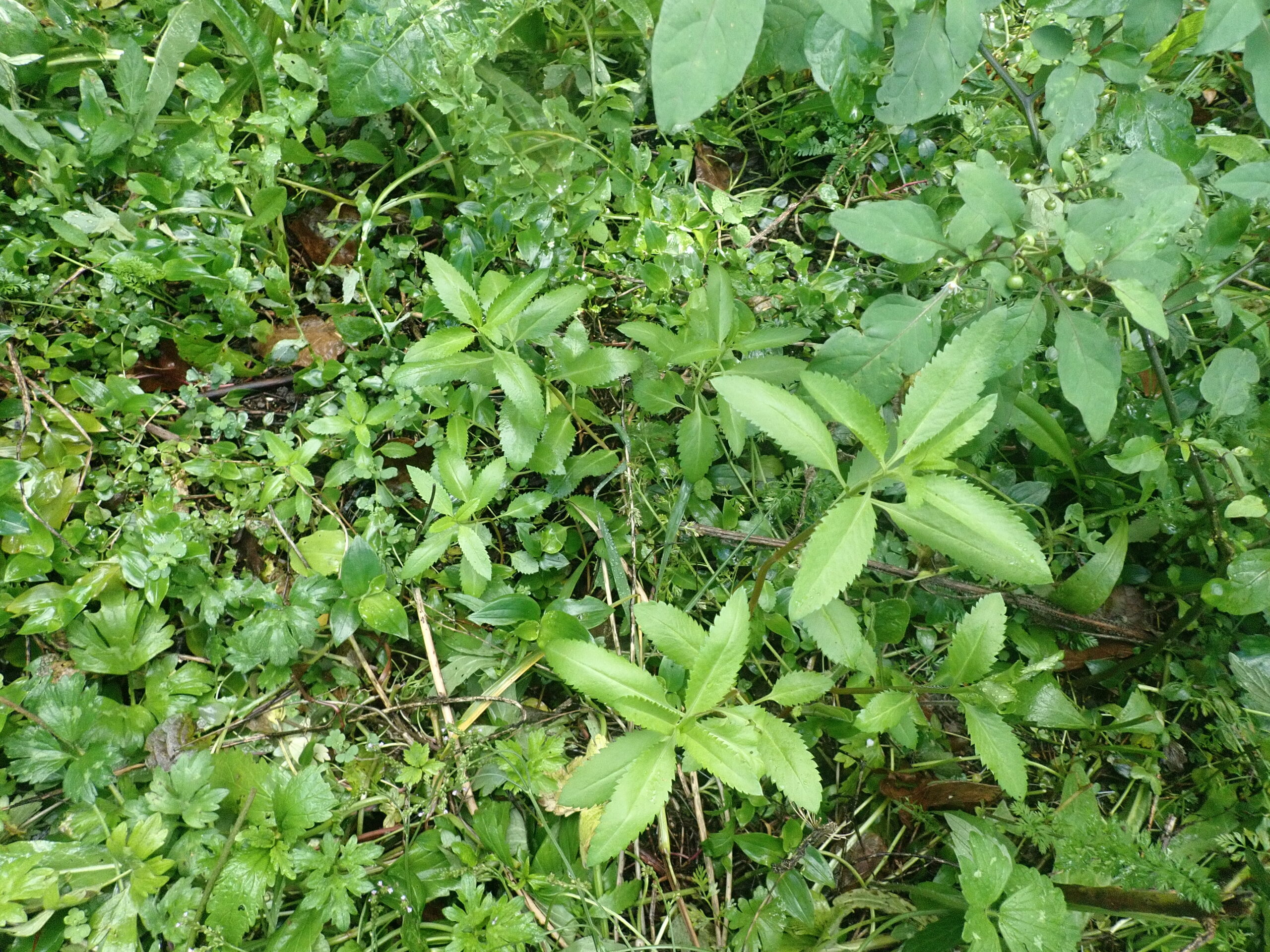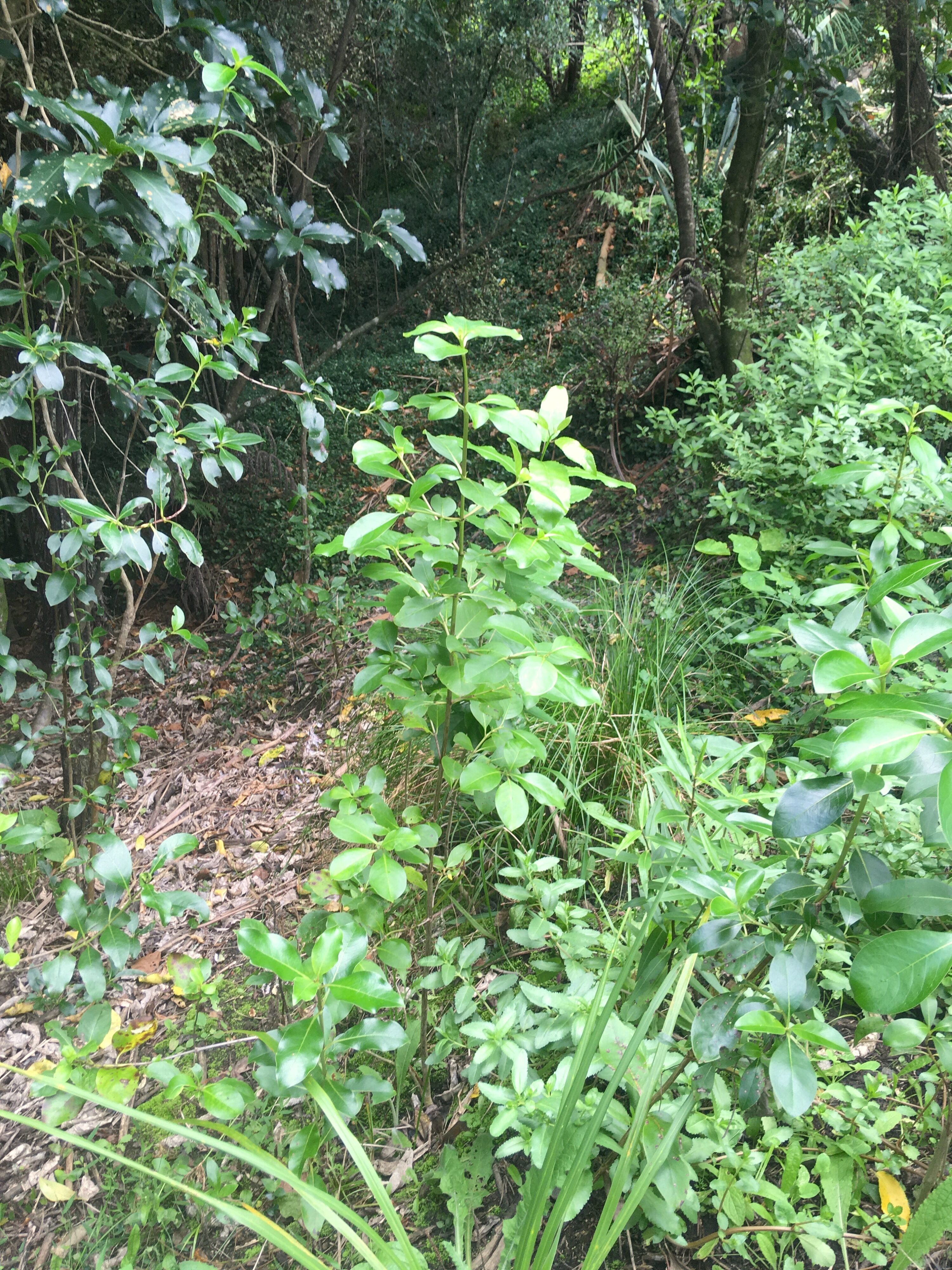From time to time we feel moved to describe what we are seeing in our single-handed restoration project “Gahnia Grove“, covering about half a hectare of regenerating wild kauri forest along and below the Glenfield Rd margin of Eskdale Forest.
The site has three major sections – Tanekaha Ridge, Rimu Ridge, and Gahnia Grove-the-original-2018-roadside-site, in June 2018 almost nothing but vine, shrub and tree weeds with uncontrolled kikuyu tangled in honeysuckle and blackberry,
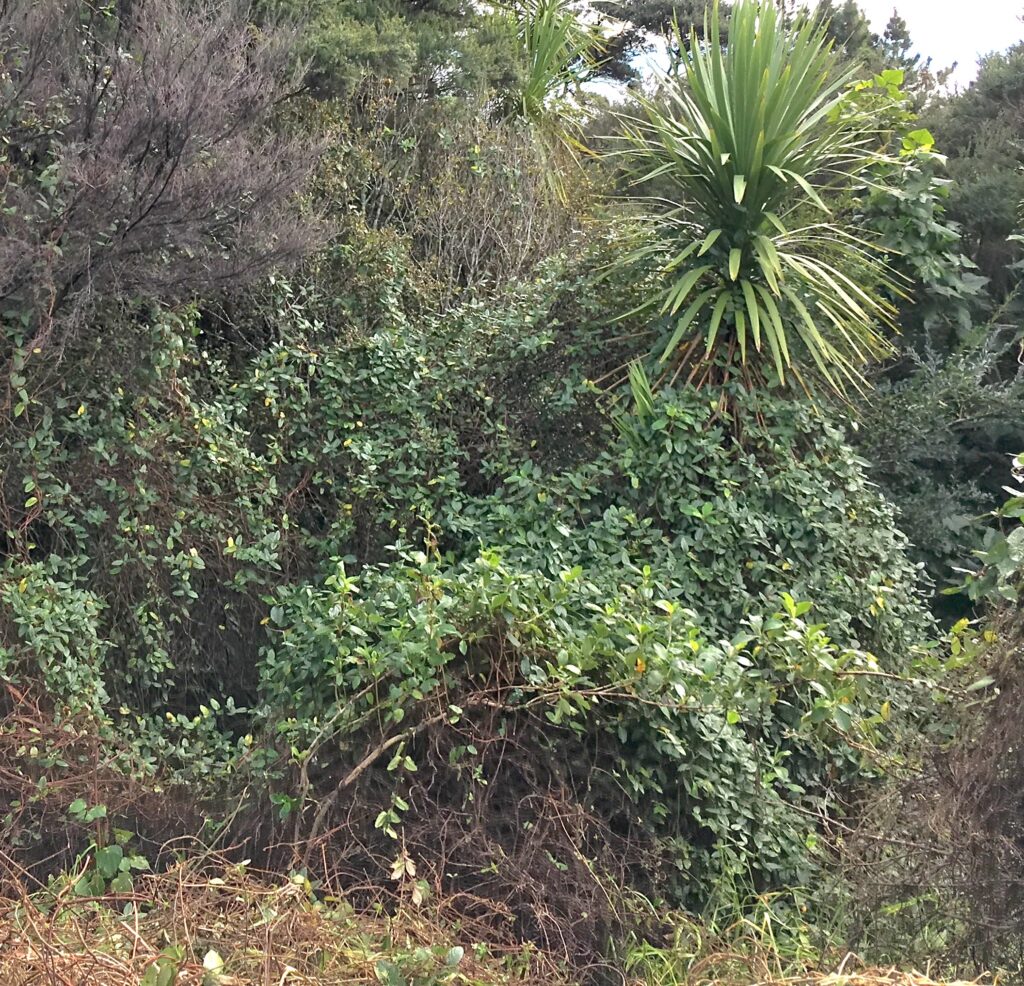
so that area was the most urgent, and made the most difference to the survival of the forest hidden behind it – see below:
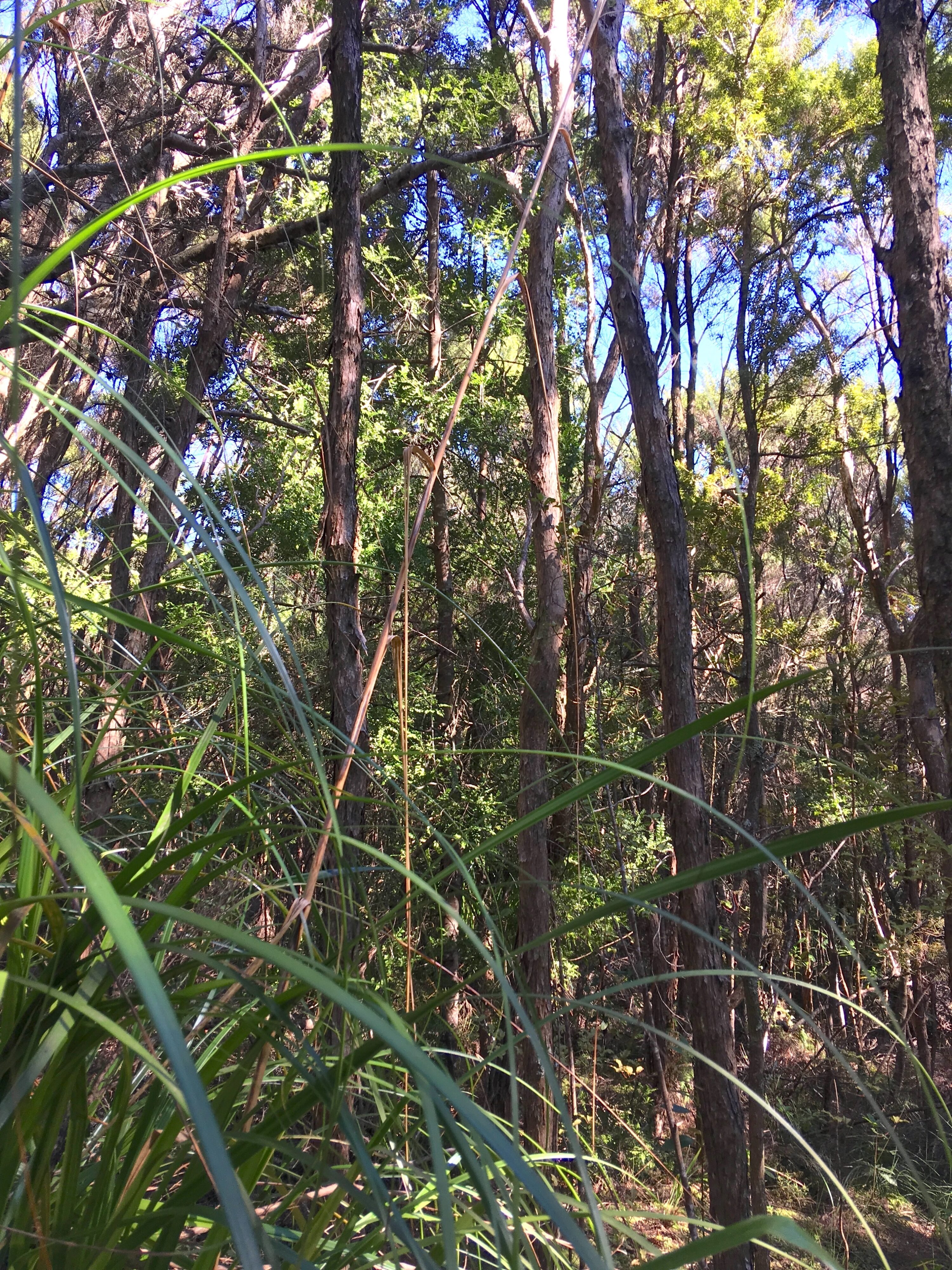
At random, then, these notes from a visit last week to “Flame Tree Bank”, visible from the roadside just uphill from the strawberry stand:
Plant species diversity beginning to increase on Flame Tree Bank
Flame Tree Bank is part of the initial 2018 Gahnia Grove restoration project. It comprises the slope around the big stand of Flame, or “Coral”, trees, from the edge of the forest canopy, uphill to the recreational mown kikuyu area bordering Glenfield Rd, nearly opposite the petrol station.
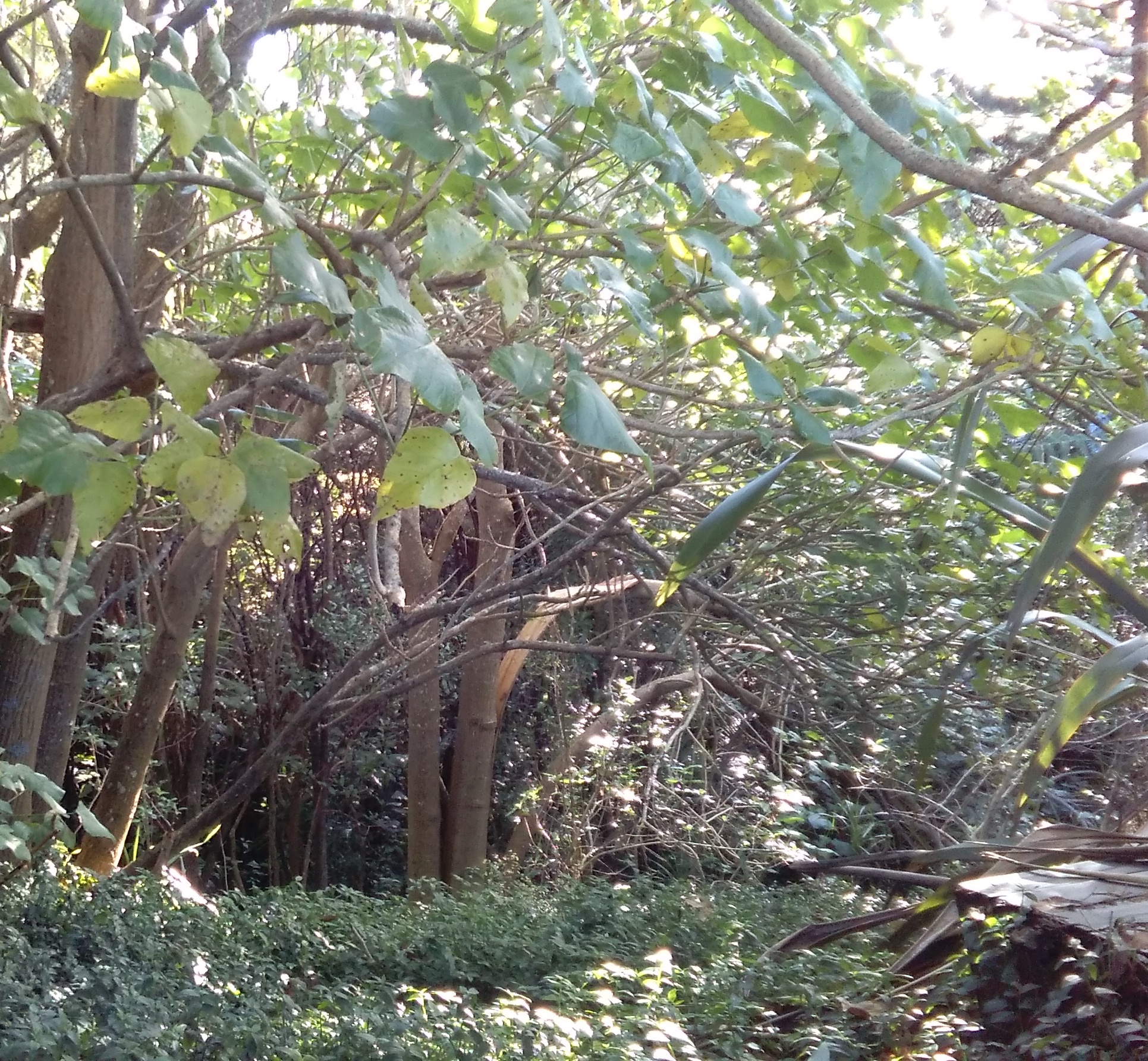
In 2018 Flame Tree Bank was completely dominated by environmental weeds. The entire tangled mess, on a steep slope above regen kauri forest margin, was (and remains) overhung by invasive Flame trees. One of two trees planted in 1999 has spread through suckering and falling branches, becoming over 30 trees, most of them now occupying space in the canopy of regenerating kauri forest.
After a request to Council for intervention when we initiated our restoration of a section of forest margin we called Gahnia Grove, these trees were expected to be controlled by arborism.
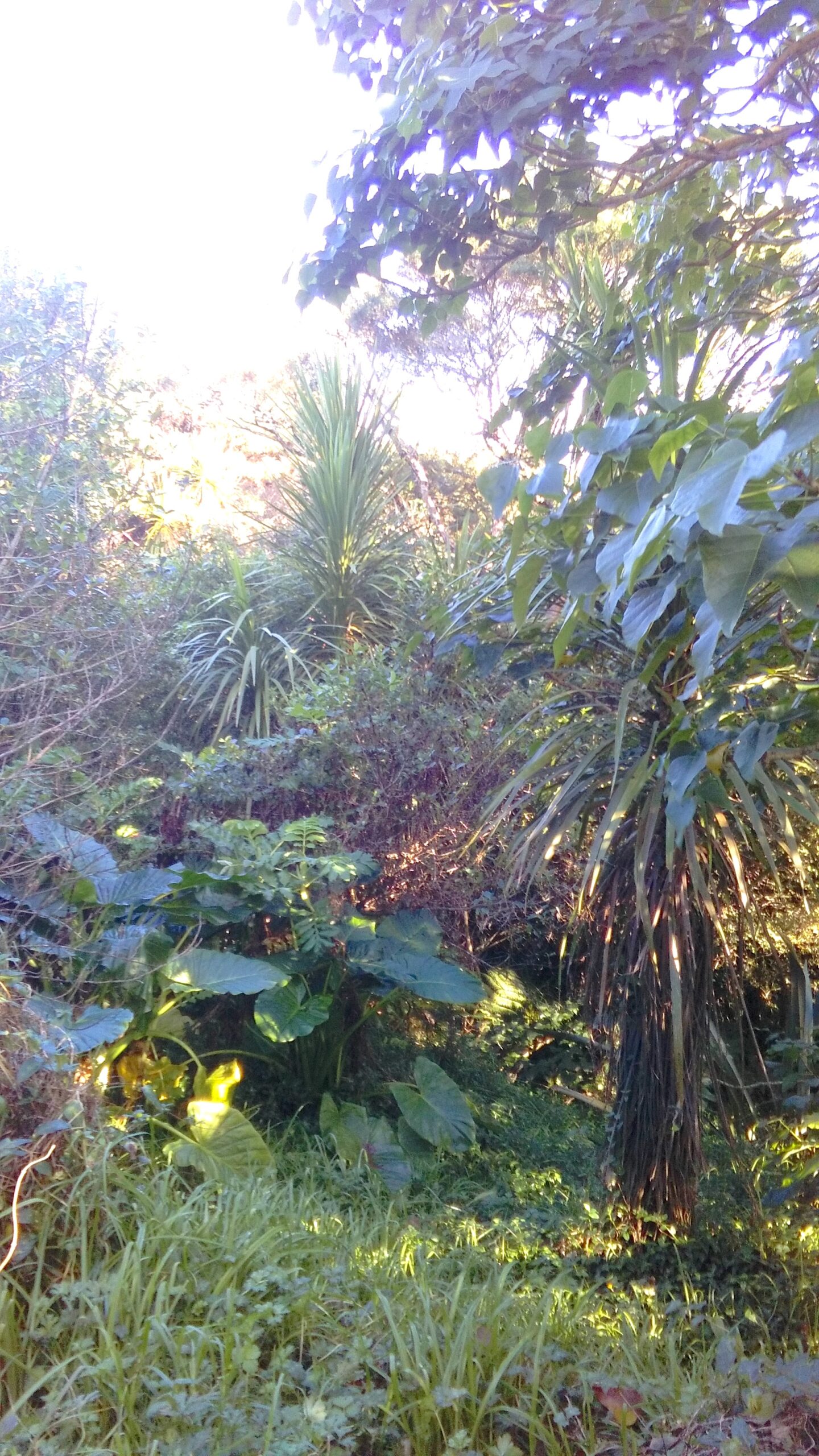
Above: Flame Tree Bank in May 2018, with Elephant’s Ear, Arum lily, Cape Honey Flower, honeysuckle and Tradescantia, and kikuyu in the foreground
Below: Jan 2019: after honeysuckle was controlled by uprooting it wherever it was easy, and rolling it up, invasive bindweed took over.
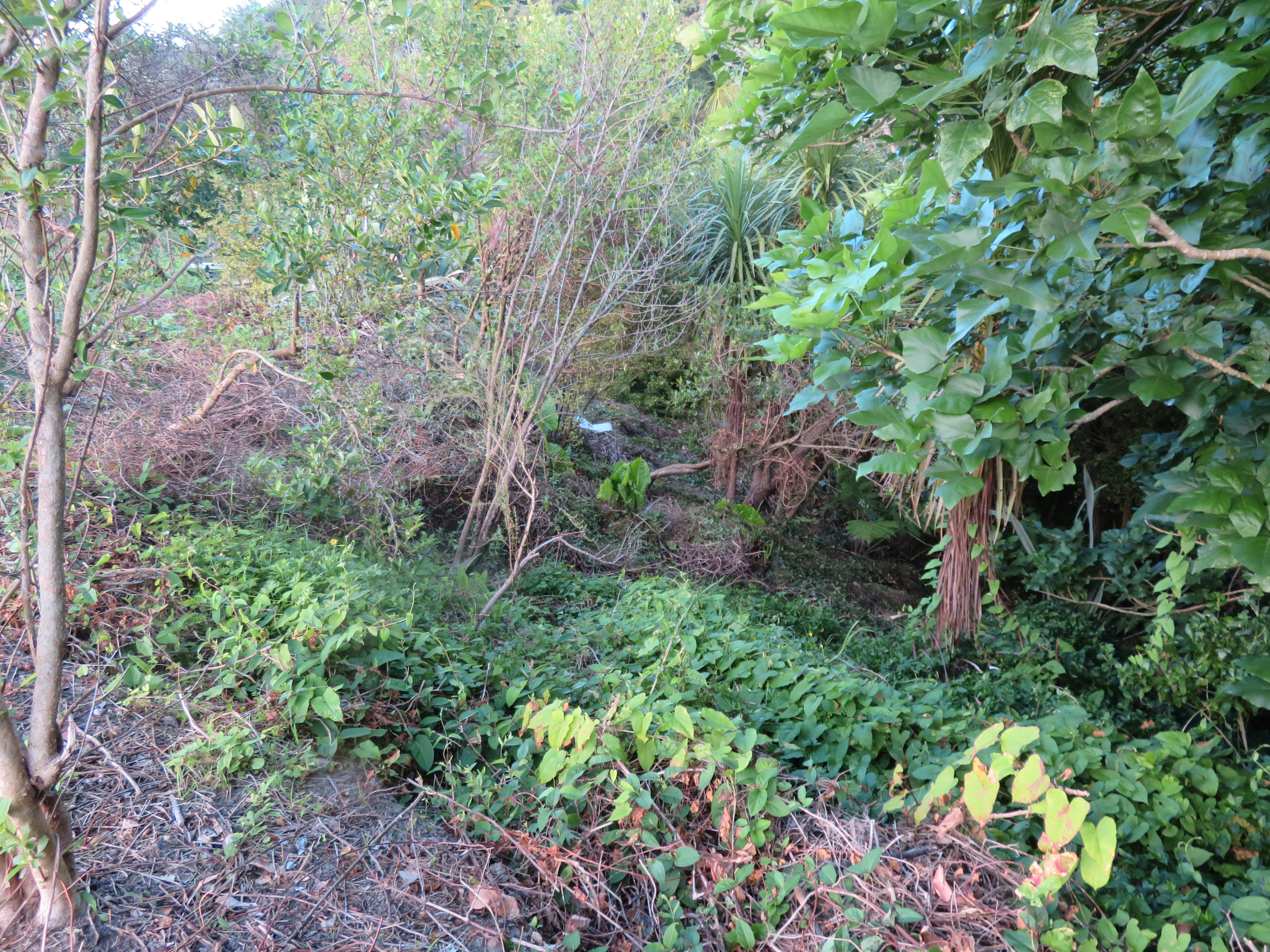
The planned arborism would have destroyed or smothered much of any regen present by that time, so we did not attempt to maintain much weed control here till 2020, when it became apparent that there would be no Flame Tree control by Council.
( On the positive side, this meant the site was not subjected to the injection of poison prescribed to accompany the arborism. And over the years since 2018, necessity being the mother of invention, we have discovered we can manually control all but the largest trees, through partial breaking of branches and ringbarking of small trunks and lower branches, both of which procedures appear to have suppressed or slowed growth in the large trees of the smaller stands, while eliminating the small trees in the forest itself).
So in 2018-19 on Flame Tree Bank we controlled only honeysuckle, bindweed, ginger, Alocasia, Arum, moth plant, extensions of Flame Tree invasion, and kikuyu, allowing the more benign weeds including Tradescantia to maintain ground cover and suppress spread of environmental weeds.
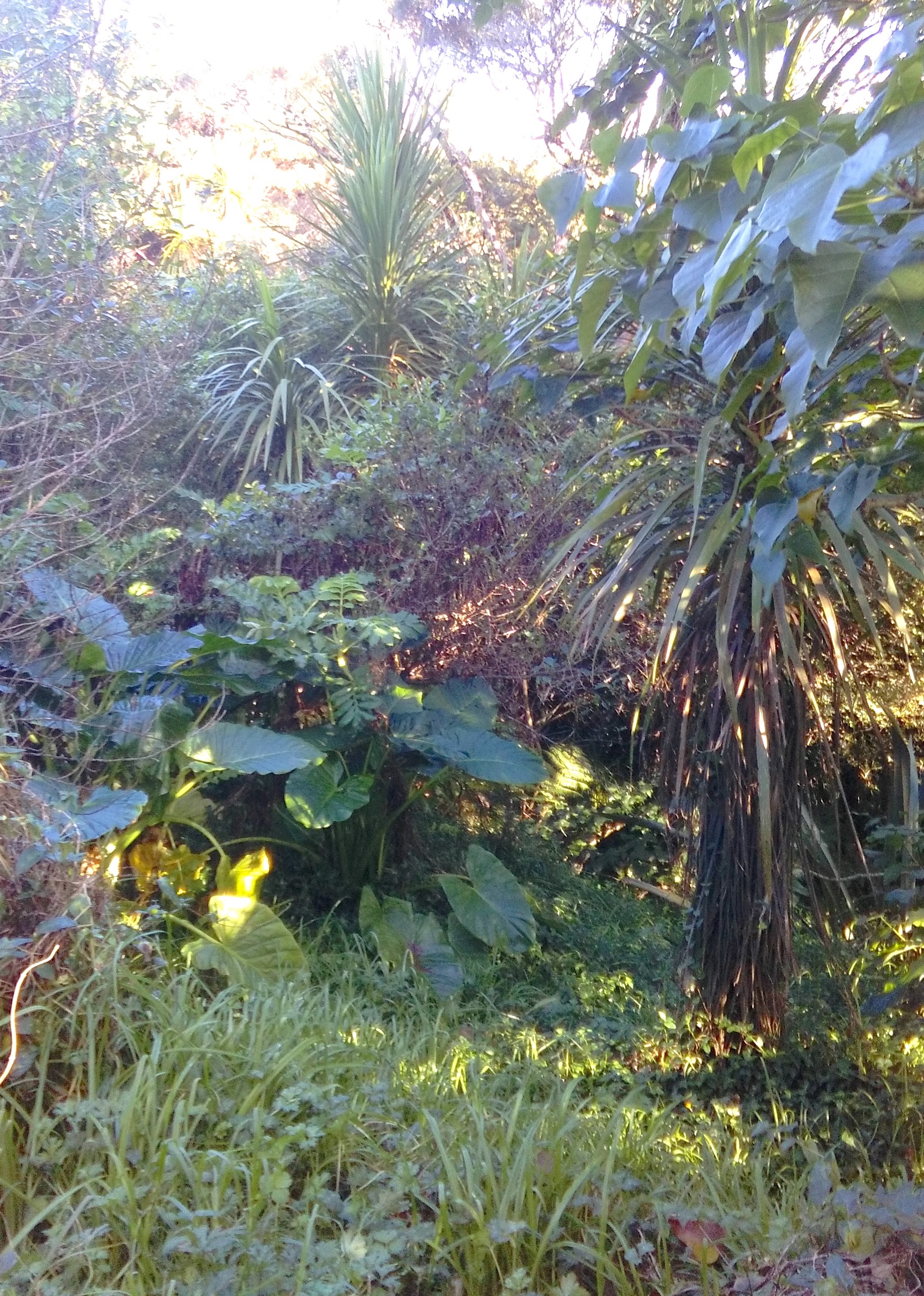
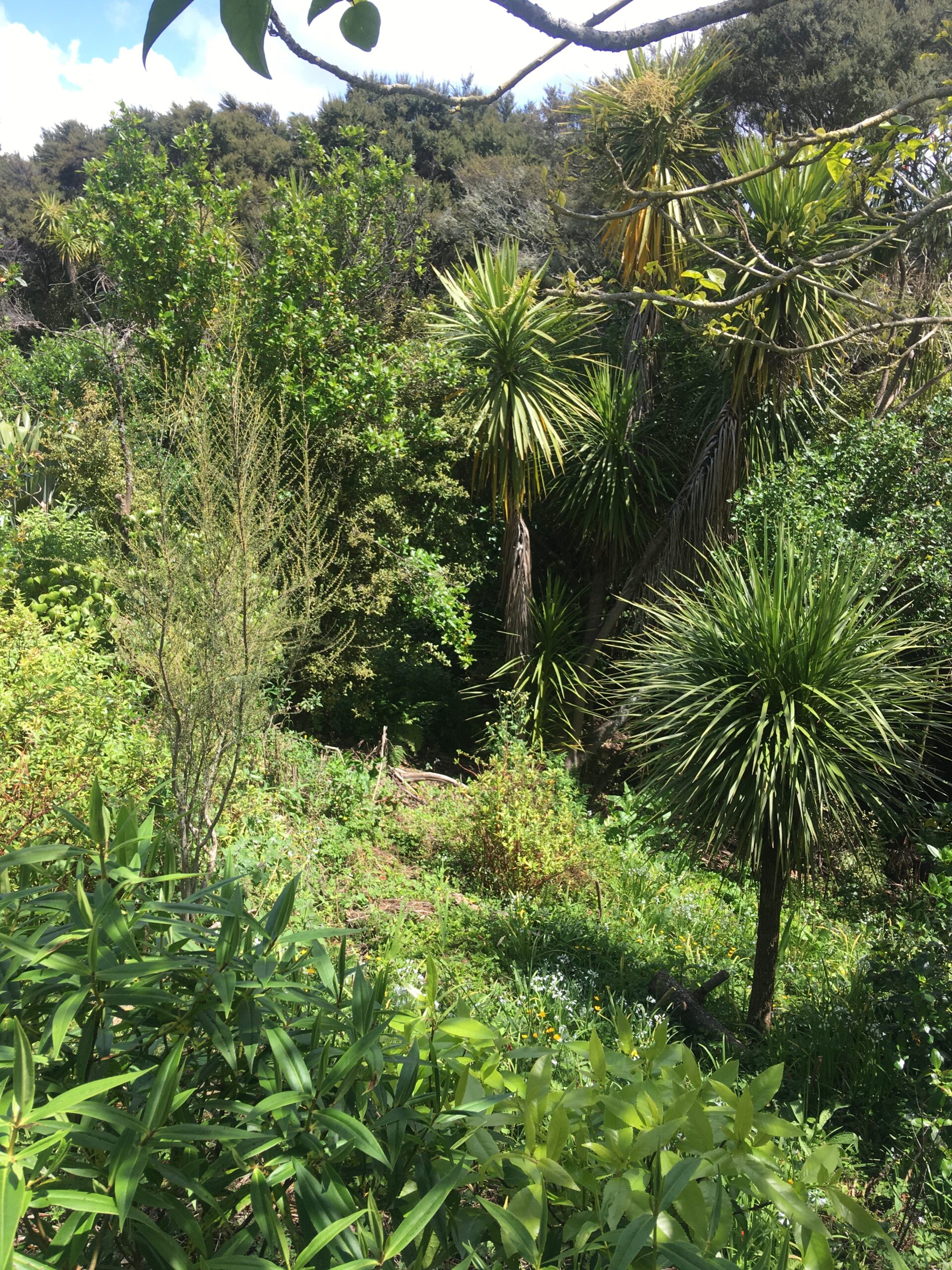
Above: The second image shows Flame Tree Bank in October 2021, after control of vine and shrub weeds, with only a few wild native plants (shrubby toatoa and karamu) emerging so far among the ground-covering weeds .
(The top half of the cabbage tree on the right was knocked off by a falling Flame Tree in 2020, so it is now half the size, and has grown a new head)
During hundreds of explorations and interventions, only 12 wild native plant species were observed on this bank from 2018-2023. In addition to the wild regen, only a dozen or so 10cm H nikau seedlings were planted.
The new wild native species seen were very young seedlings released from Tradescantia in 2019
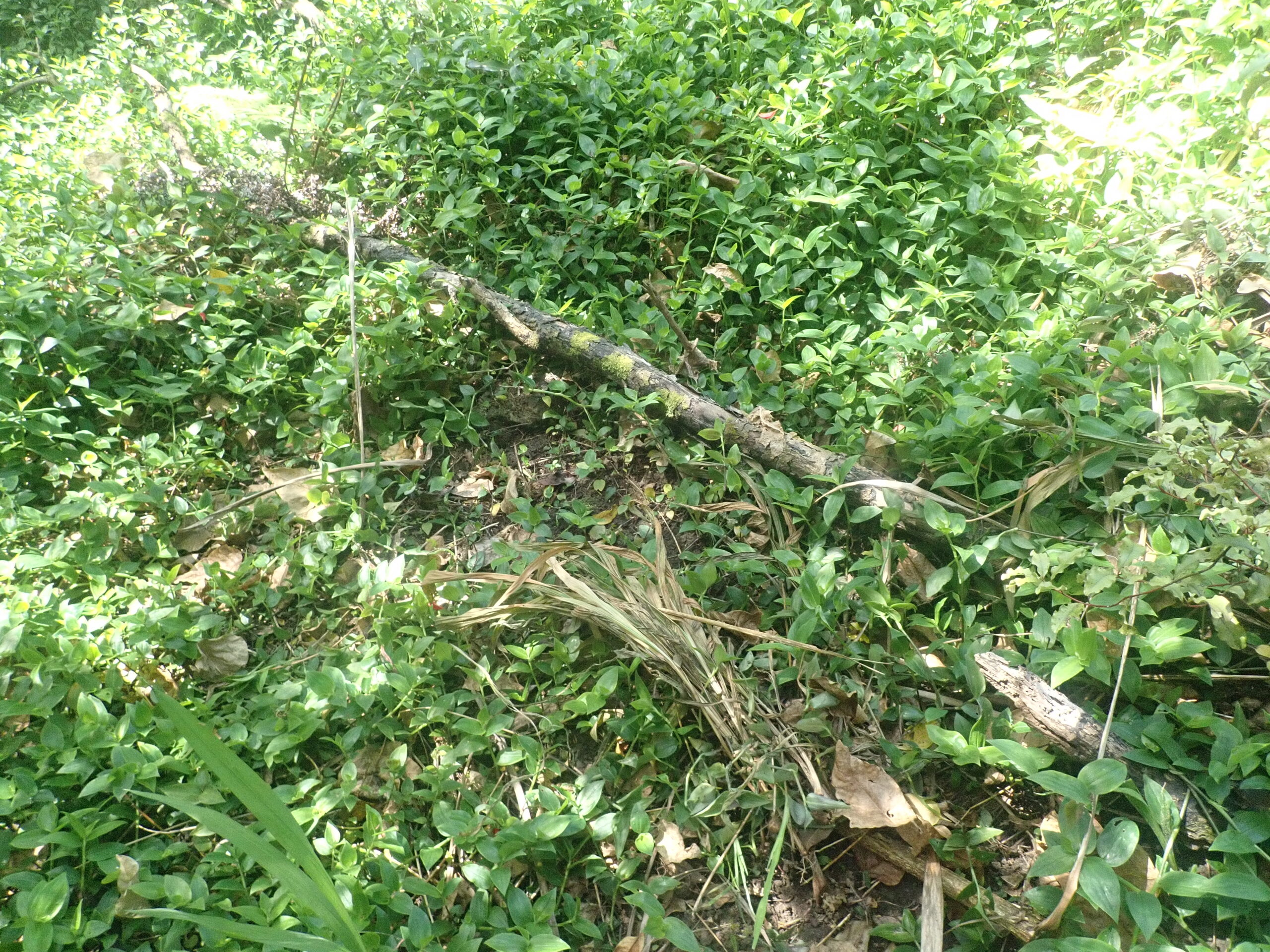
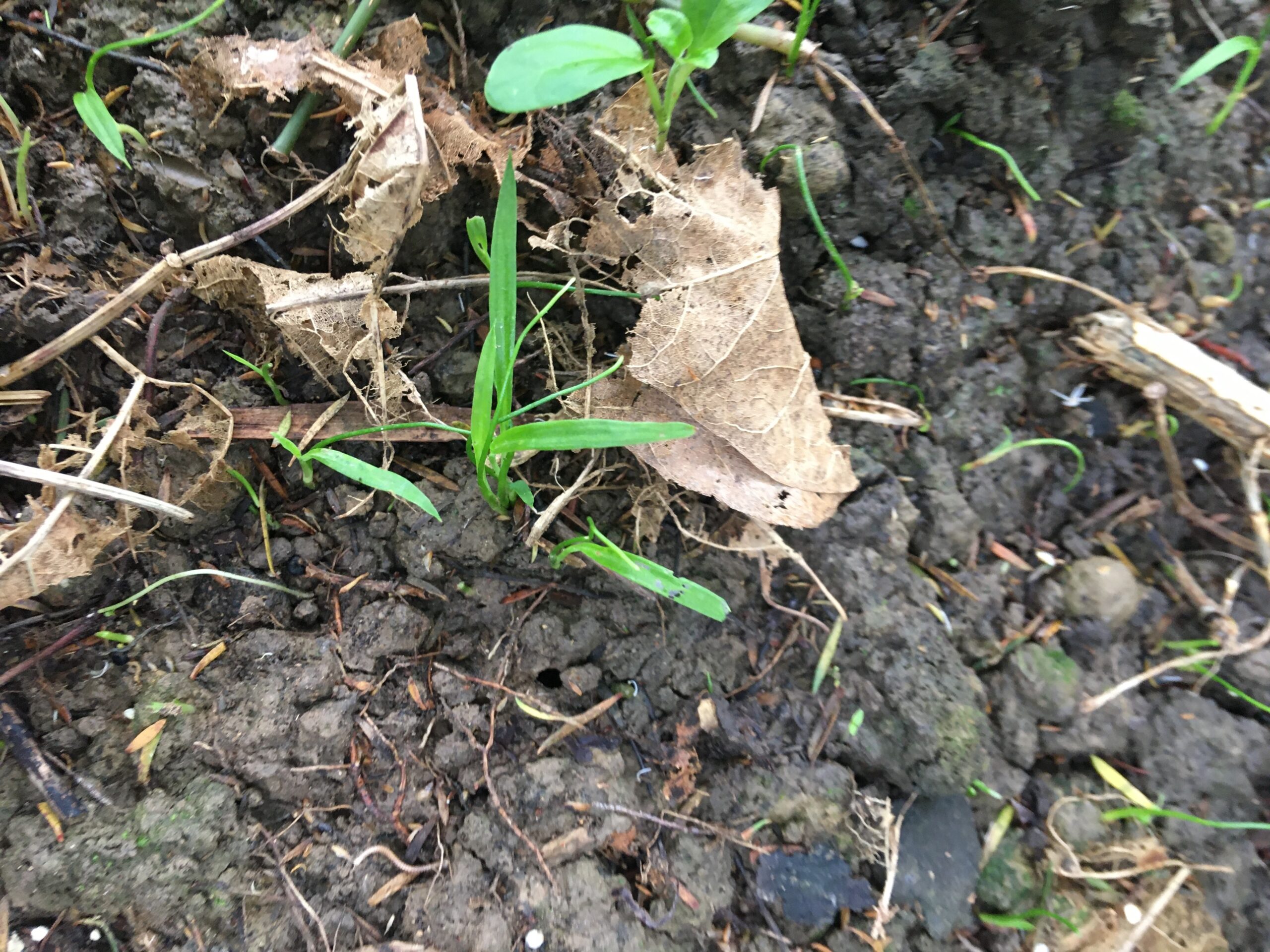
and later dying (due to natural attrition or drought). These seedlings were ti kouka/cabbage tree, karamu, and a few kahikatea.
The forest canopy edge down the bank had been released from Tradescantia in late 2018, and the same species of seedlings were found beneath Tradescantia regrowth in 2019:
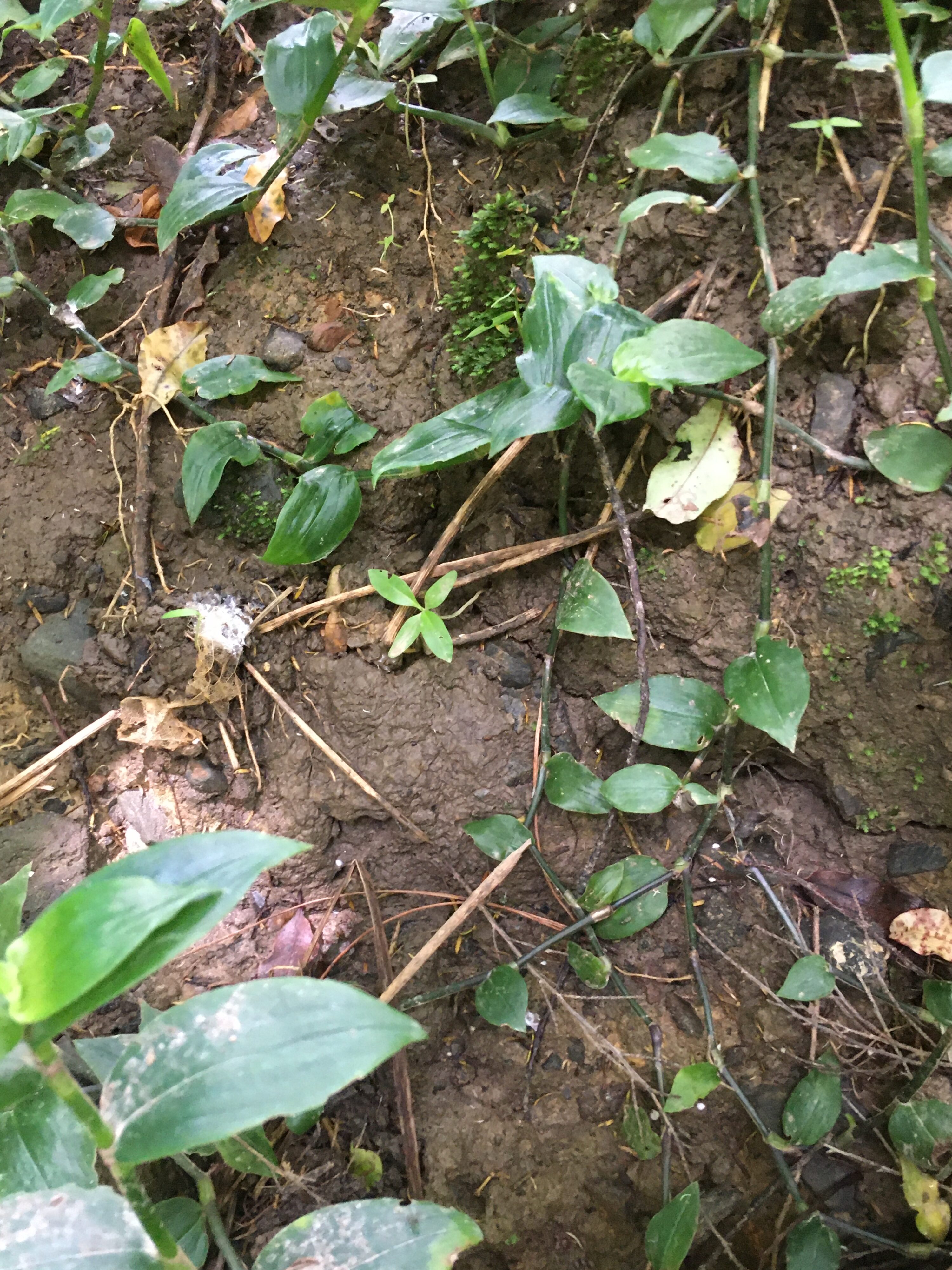
This week, under the shelter of the rapidly developing regen spreading from the boundary of Flame Tree Bank top with the adjacent Cape Honey Flower (CHF) Bank top, we found:
- a single mapou seedling
- a single Pteris tremula sporeling
- 2 Hebe (Veronica stricta) seedlings
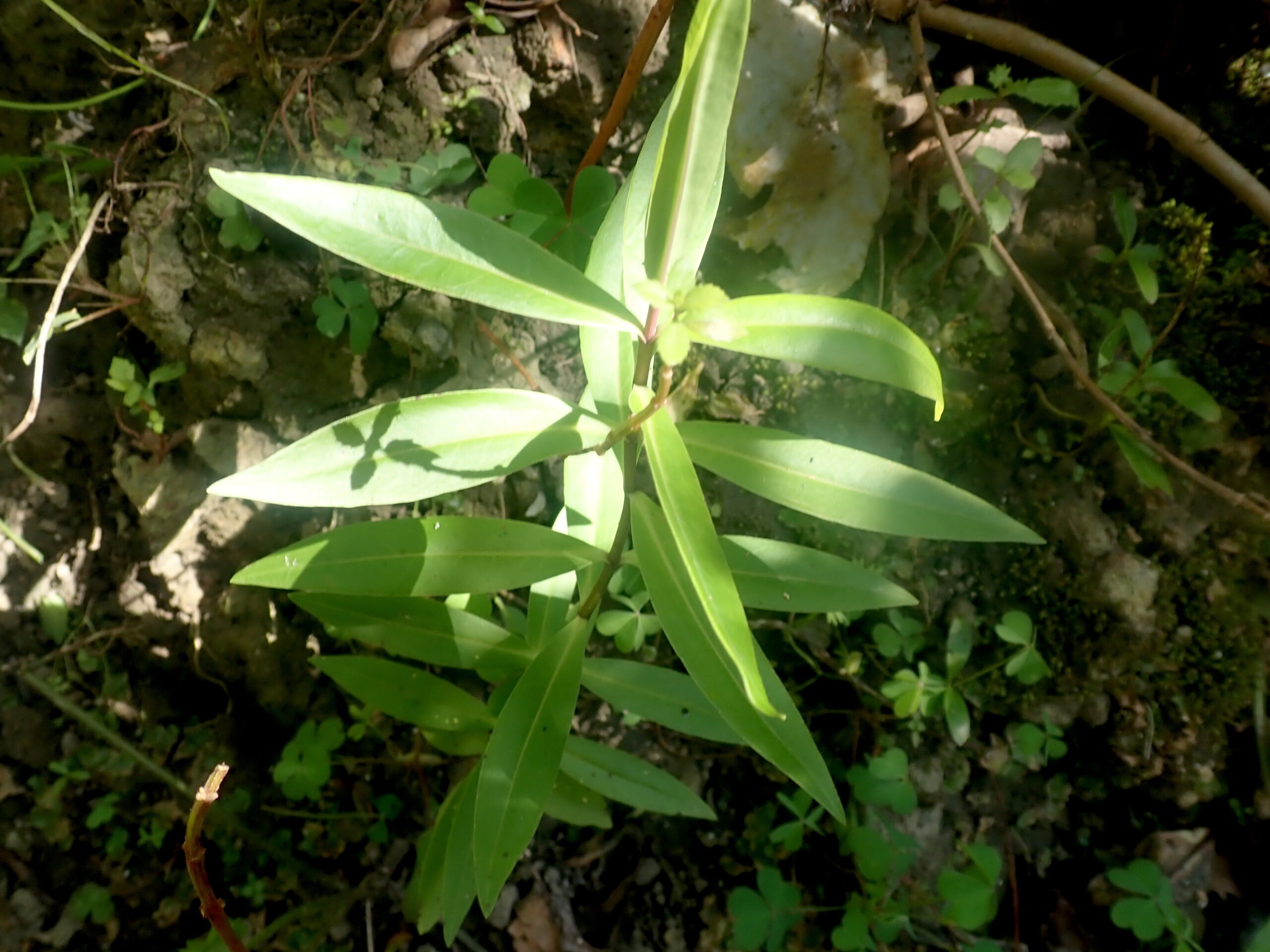
and several Carex lambertiana – with more karamu seedlings, which have become common on Flame Tree Bank since 2022.
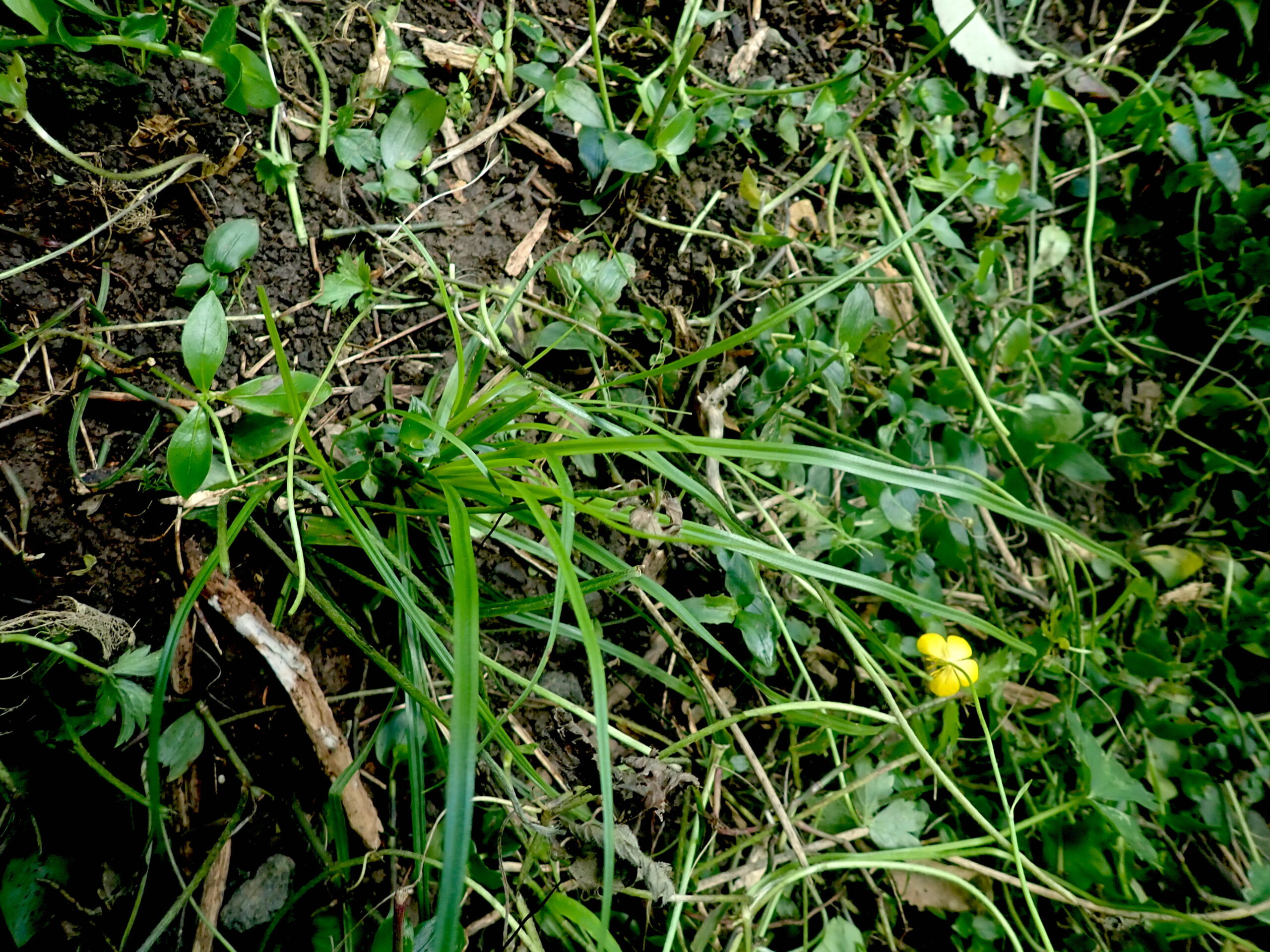
These 4 modest finds are all well-situated among 2-3 year-old native regen not likely to be overtaken by weed, drought or flood, and while not extraordinary or even of note in other situations, they indicate significant progress here.
A very weedy site gives enormous rewards, through the contrast of ugliness, waste and destruction with the harmony seen in emerging native plant communities, and the lush growth in sheltered soil enriched with the composting weed material.
We hope to find time to present some other views of Gahnia Grove before, during and after the ongoing restoration.
